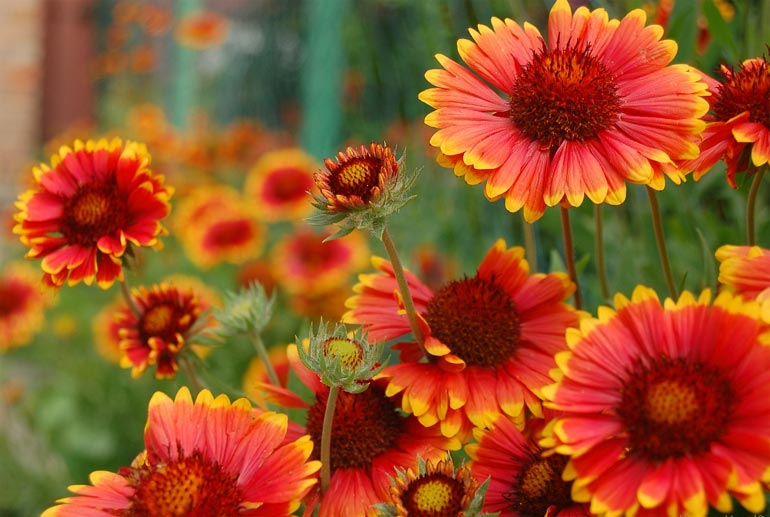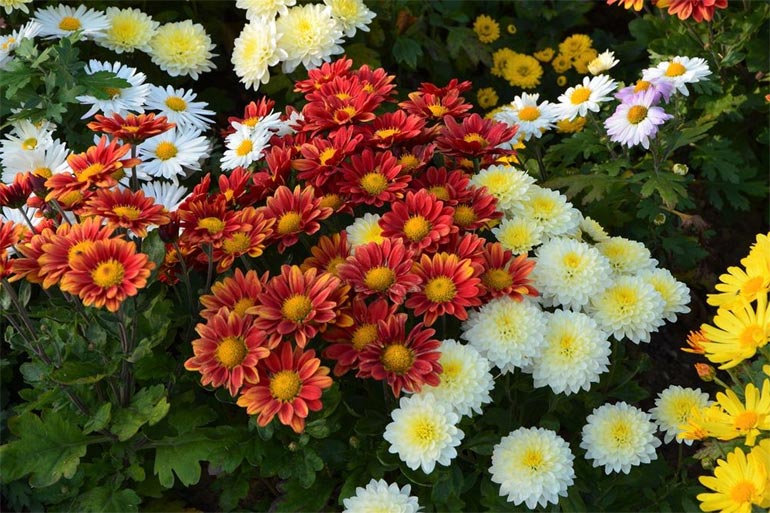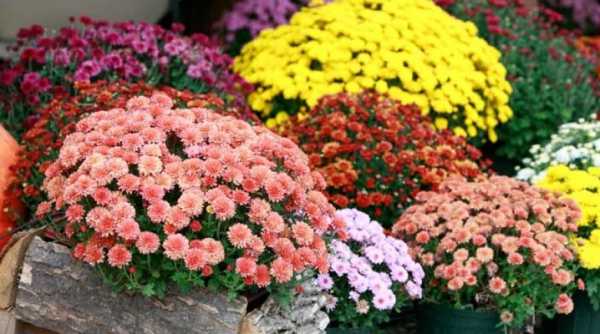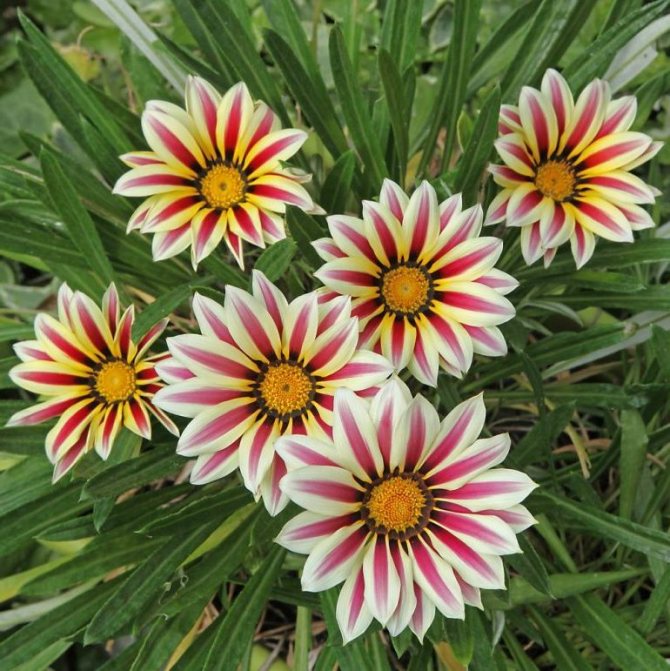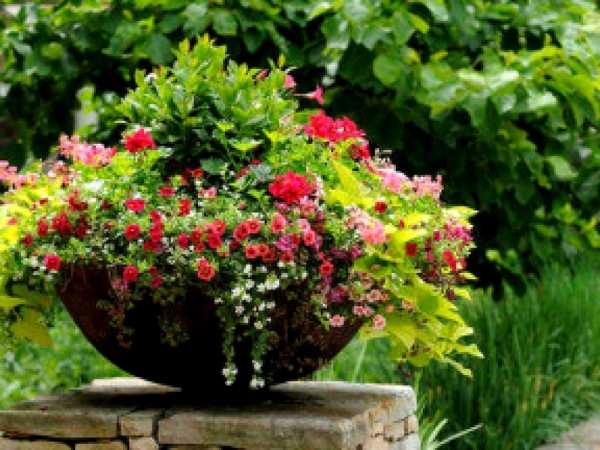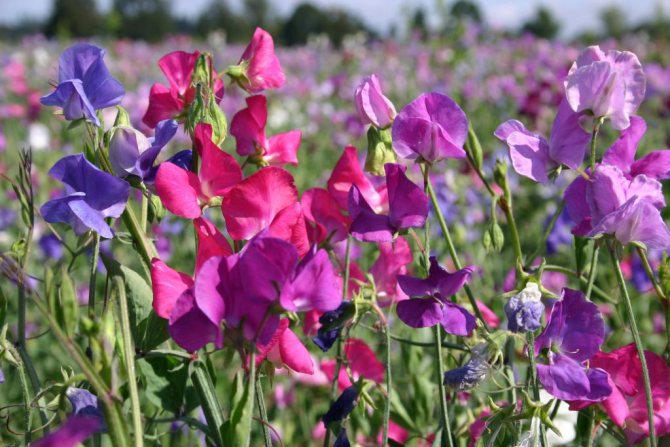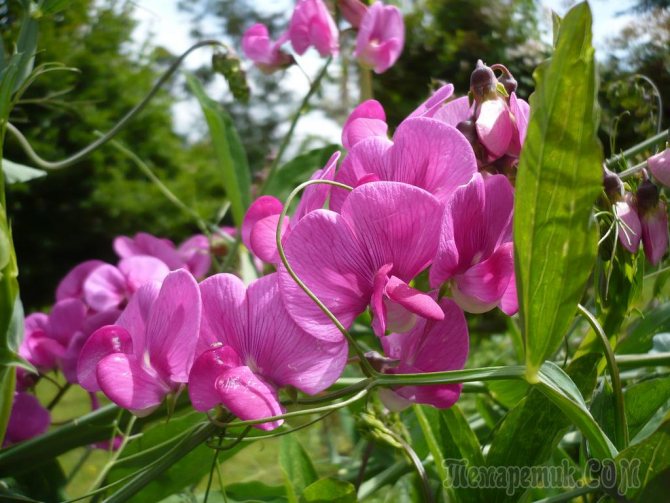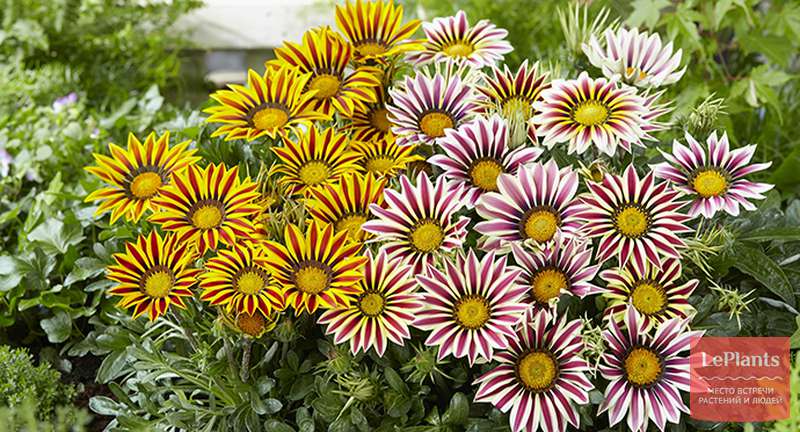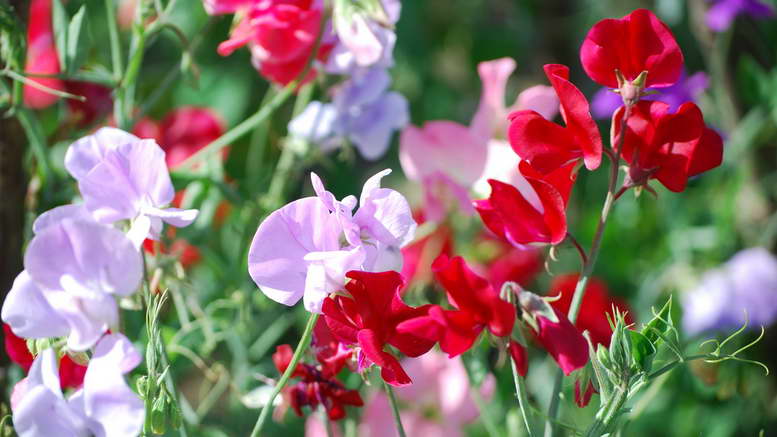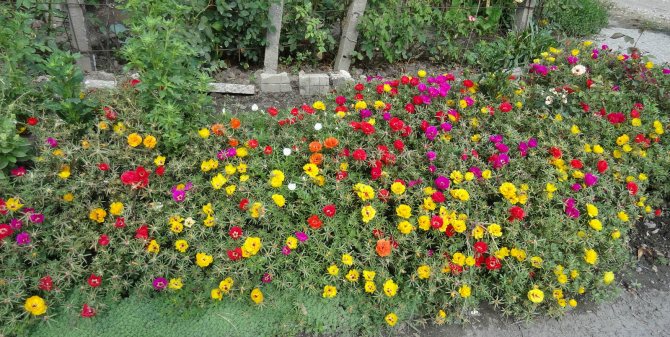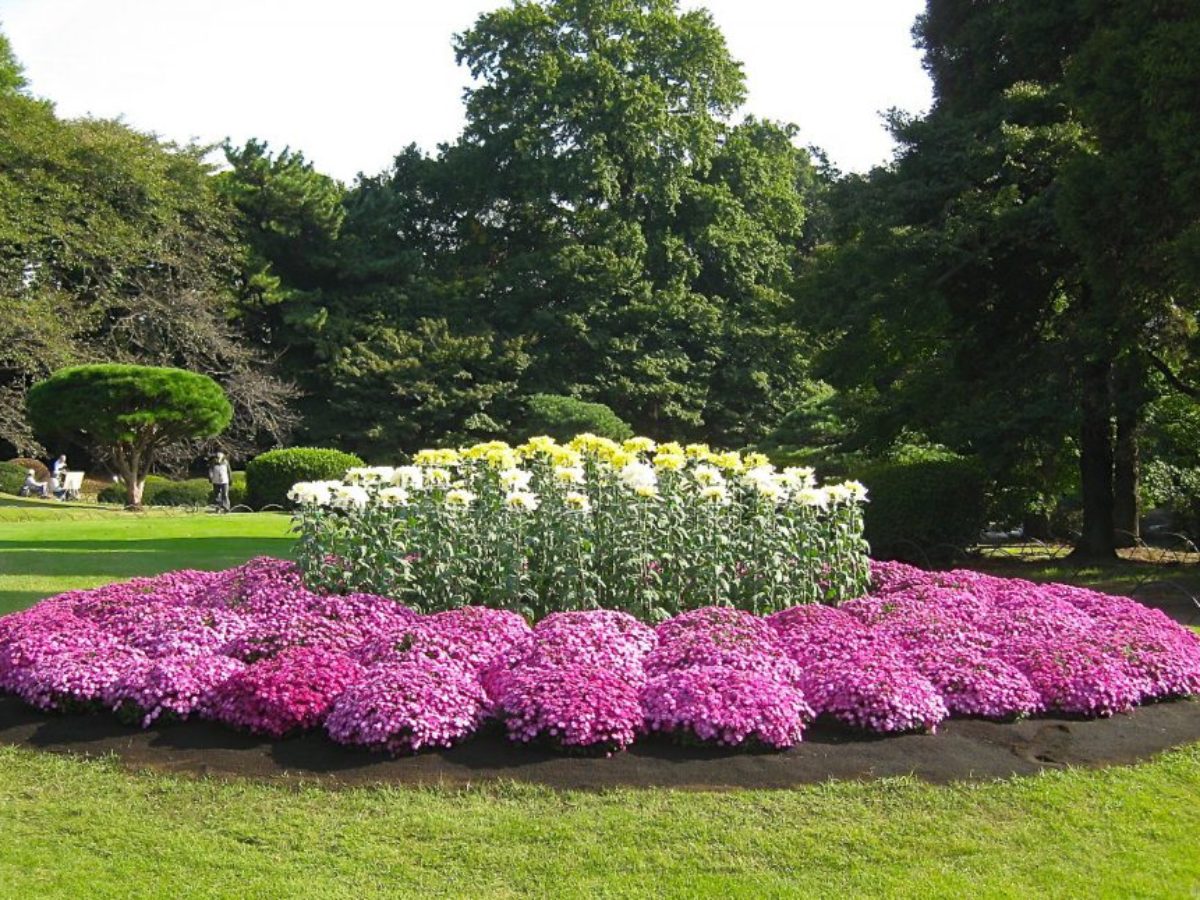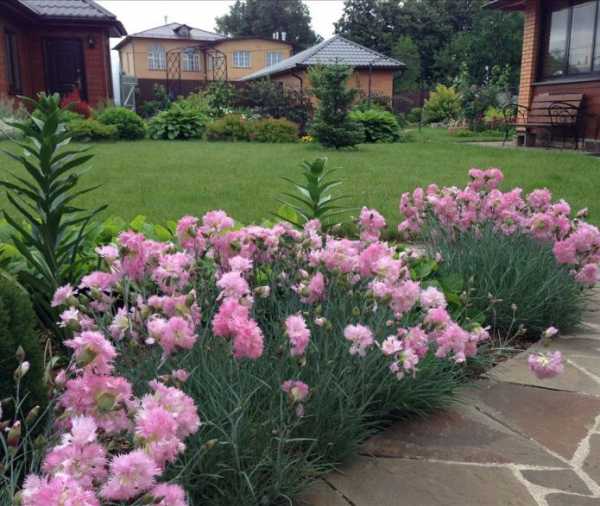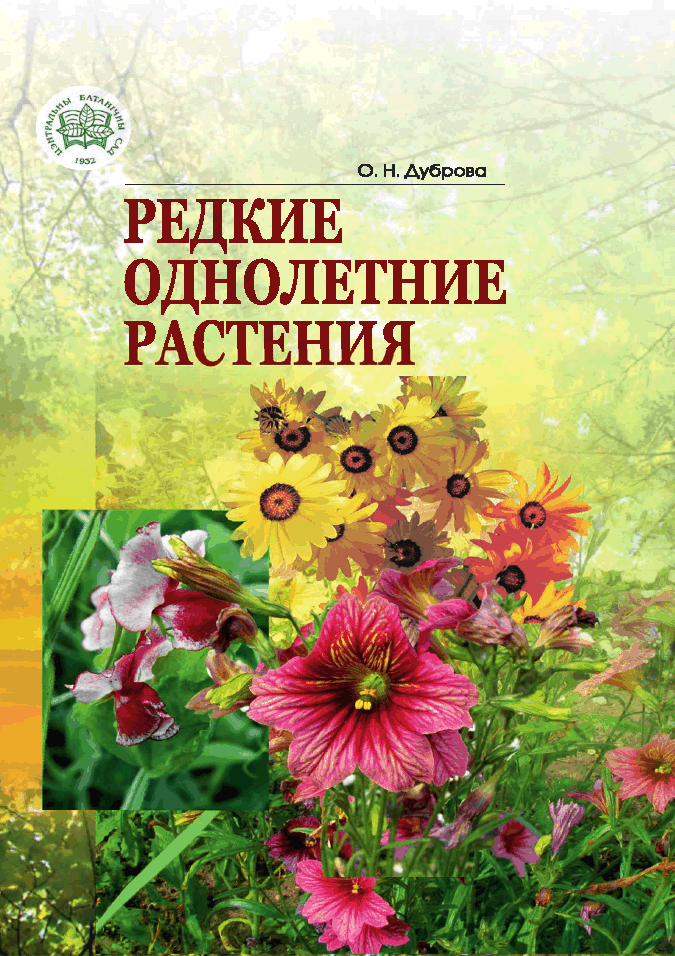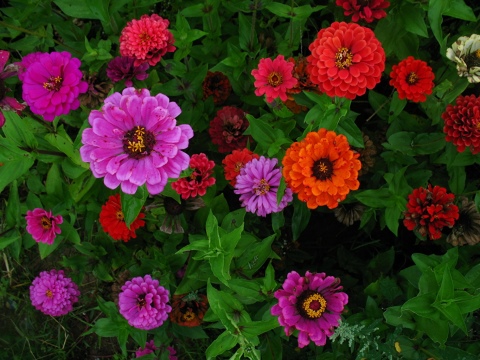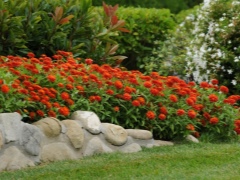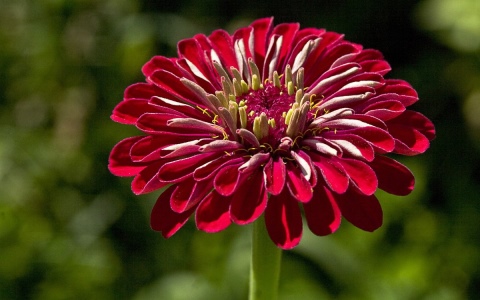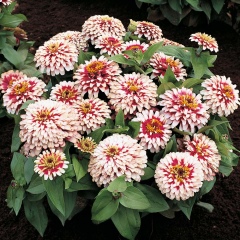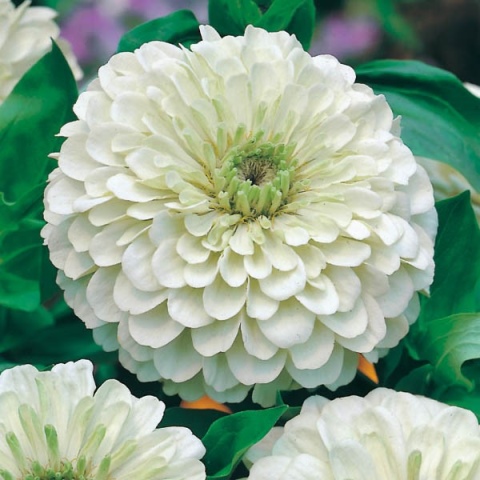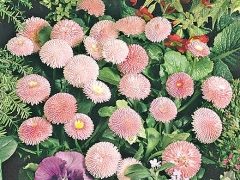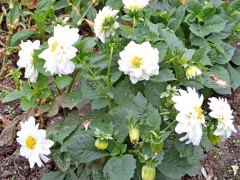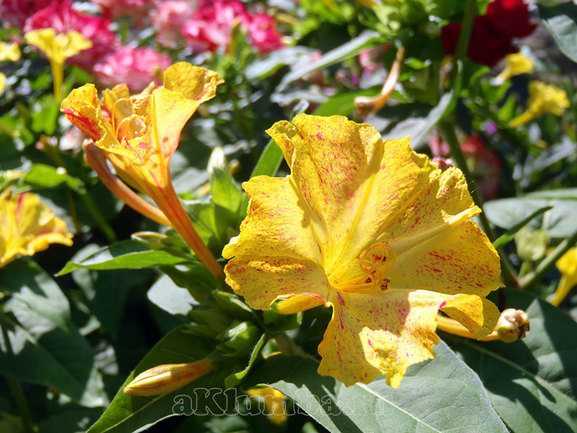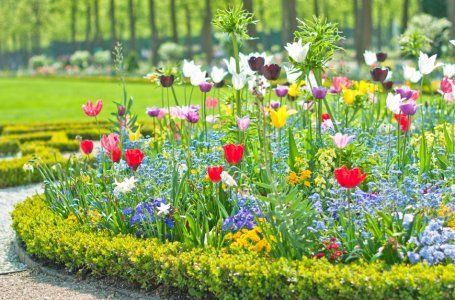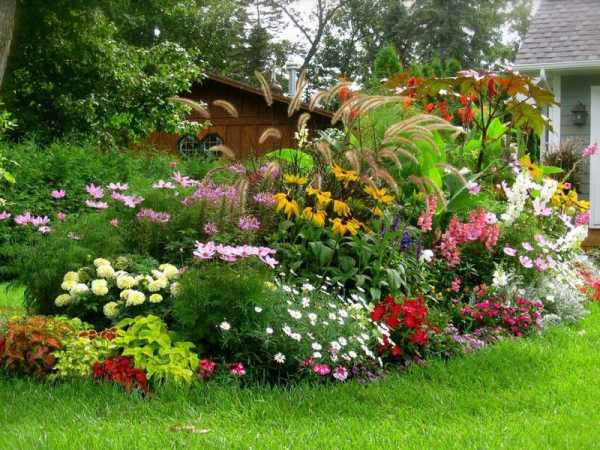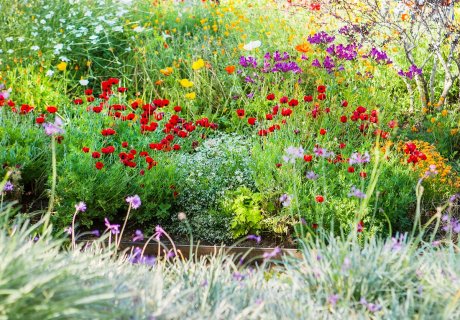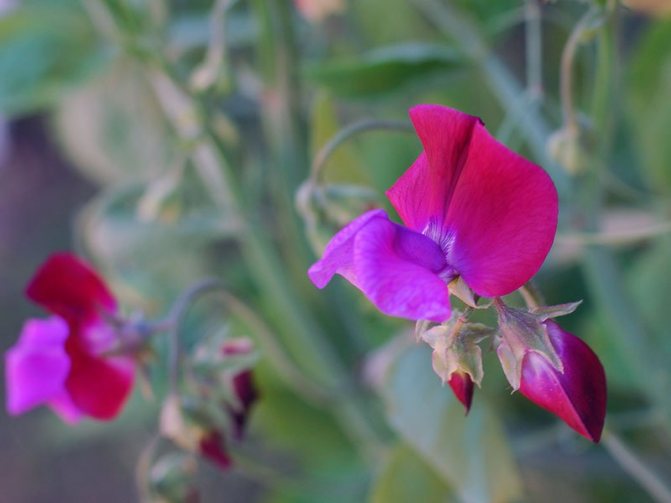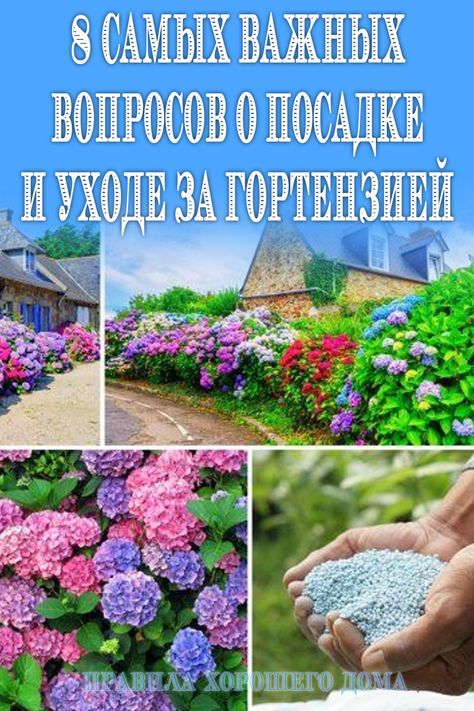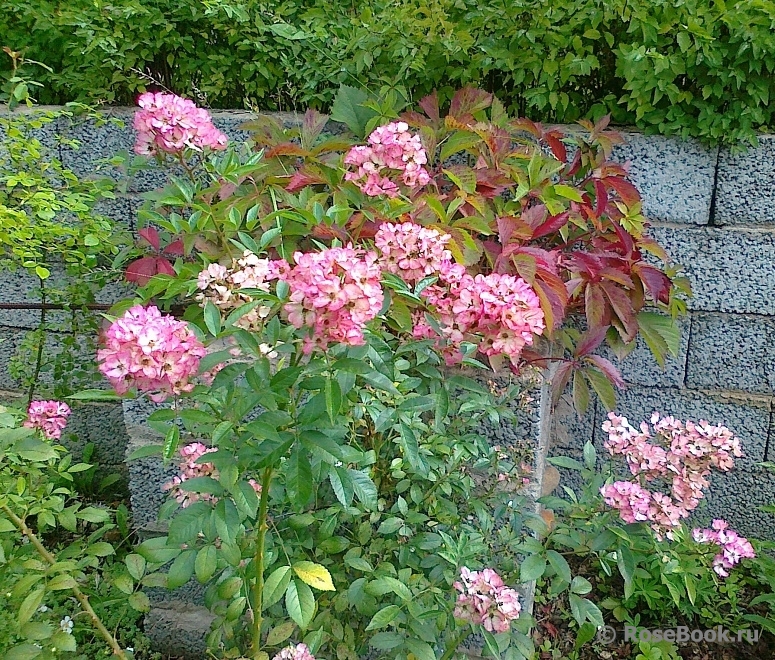Petunia
A unique and versatile flower! Is it possible to believe that modern luxurious petunia is a close relative of potatoes and tomatoes?
The plant has a rather complex and confusing classification, a huge variety of varieties, shapes and colors. Therefore, it is simply impossible not to find a variety that will satisfy all your requirements!
The plant is the easiest in seedlings, because the seeds of the petunia are very small, and the tiny seedlings suffer greatly from the black leg. However, if the difficulties are frightening or there is no time to grow your own seedlings, you can always buy ready-made ones. Any petunia will bloom until frost.
Zinnia graceful (Zinnia elegans)
This is a species with abundant flowering. Reaches a height of 90 cm, but on average it is 20-70 cm. The stem is erect, the leaves are dark green, oval-pointed. Both the stem and the leaves are covered with tough villi. Zinnia graceful - fast-growing, strong and cold-resistant, can bloom until the first frost. Bloom - from early June to September-October. Flowers - lilac, yellow, pink, orange, red, cream, purple, white. According to the type of inflorescences of graceful zinnia, subgroups are distinguished - fantasy, scabios, gaiardin, chrysanthemum, pompom and dahlia. The last two groups are most widespread in our country.
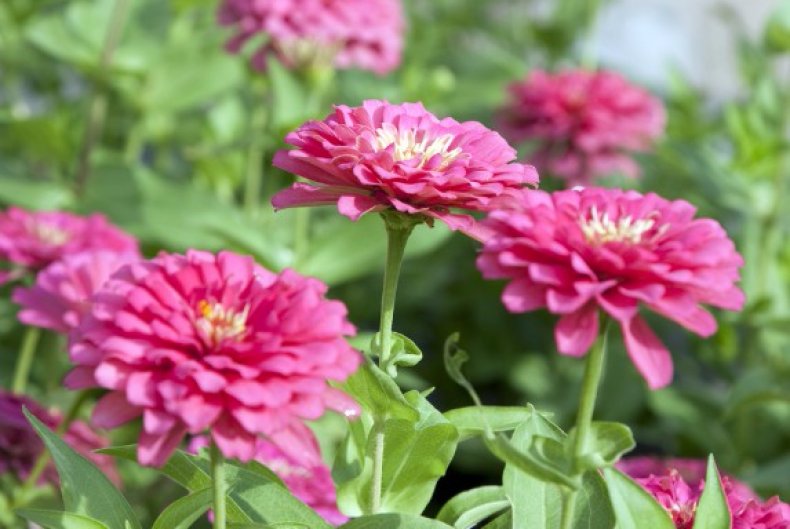
Zinnia dahlia-flowered - tall compact or, conversely, overgrown bushes with large ovoid leaves and large - up to 15 cm in diameter, double hemispherical, flattened from below flowers. The ligulate flowers are raised along the edge and lie in the form of a tiled masonry, hanging over each other. The most popular varieties:
- zinnia Violet is a sprawling semi-shrub, 70-80 cm high, with dense double flowers of various shades of purple;
- Purple - a spreading bush up to 85 cm tall, with loose blood-red flowers;
- Rose is a wide-bushy variety, reaches a height of 55-65 cm, with medium-dense double flowers of pink color, varying in brightness;
- zinnia Raspberry Monarch - a wide bush up to 70-75 cm in height, with dense double inflorescences of crimson and bright red color;
-
Fantasy - bushes wide up to 70 cm in height. The flowers are large, double-curly, with narrow petals curved from the edge (sometimes bifurcated at the ends) inwardly. This subgroup has several more groups of different colors and degrees of terry;
- zinnia Cherry Queen - a neat bush up to 75 cm tall, with bright cherry large flowers;
- Lavender Queen (sometimes simply called Lavender) is a sprawling, tall bush - up to 70-80 cm, thick double petals, pale lilac-lilac;
- Envy - 60-75 cm high, with the most, perhaps, unusual - the green color of the petals, as well as its various shades;
- zinnia Tango is a fairly compact growing bush, up to 70 cm high, with large saturated orange or bright red double-friable flowers;
- Polar Bear or White - height 60-65 cm, flowers - white with a barely perceptible light greenish tint;
-
Purple Prince - 55-60 cm high, with large saturated purple flowers;
- zinnia Mandarin Mousse - up to 85-90 cm in height, with large spherical inflorescences - up to 14-15 cm in diameter, terry rich orange petals;
- The Fire God is up to 75 cm tall, with a rounded inflorescence, with long, brick-red petals wrapped in a tube.
Did you know? A hybrid of the dahlia group - the giant zinnia Russian The size of F1 reaches a height of 1.5-1.6 meters! There are two colors - scarlet and gold. Very nice, looks spectacular in a vase.
Pomponnaya zinnia, or zinnia Lilliput, is bushy and blooming profusely, but shorter and with rounded inflorescences that are less large from 4-5 cm in diameter. The most popular varieties:
-
Little Red Riding Hood - the bush itself is branchy-spherical in shape, 50-65 cm high, with dense, densely double spherical ruby-red flowers;
- Thumbelina (hybrid variety mixture) - densely branched bush, up to 50 cm high with double dense inflorescences of different colors;
- Tom Tumb is also zinnia terry, semi-bushy, but compact, 35-50 cm high, with dense red flowers.
Important! Zinnia is photophilous, therefore, when planting, spacious, not shaded areas are selected in advance for it.
Peculiarities
Organizing an ever-flowering flower bed that will retain its decorative effect regardless of the season is not an easy task.
Planning such a flower garden implies compliance with several conditions at once:
- Allocation of a spacious landing area. The imitation of continuous flowering is based on the constant replacement of some plants with others. A similar result is achieved by combining many crops with different flowering phases. It is impossible to place so many flowers in a limited area.
- Creation of a solid composition with large color spots. Planting single specimens is unacceptable, because the indicated decorative effect is provided by islands of "uniform" flowers. A flower garden with a large area is also needed here. A composition with chaotic flowering of individual plants looks fragmented, introducing an imbalance in the overall design of the garden.

- Formation of large groups of plants according to the principle of similar flowering phases, and not the distribution of crops throughout the flower garden. The explanation for this requirement is the same: because of the scattered small accents, the flower arrangement ceases to look whole, violating the harmony at the summer cottage. The verified variability of the flower bed is achieved precisely thanks to the alternately solo seasonal groups.
- Breakdown of an irregular flower garden with a free planting: this is how the club will look as natural as possible. If the design of the backyard area is designed in a strict style, then it is problematic to fulfill this condition. In this case, a more acceptable option would be a breakdown of several flower beds of seasonal flowering, and not the integration of an all-season flower garden into an inappropriate design of the site.
Advantages of continuous flowering perennial plants:
- They are durable. Updating such a flower bed is required every 6-7 years.
- Easy to maintain. Care comes down to spring cleaning, summer watering and weeding.
- Economical. The purchase of perennial plants is a one-time action; annually, you will only need to purchase the bulbs of annual crops.
- Unpretentious in terms of planting sites - perennials will be equally happy with the sunny side of the site, shade and partial shade. Limited access to the sun does not affect their decorative effect.
- Eliminate soil depletion problems.
Use in landscape design
Decorating gardens and yards with vibrant colors such as zinnias is considered very popular today. This horticultural crop is usually grown in groups as a mixture of several varieties with different flower colors - this allows you to create accent, rich flower beds and borders.

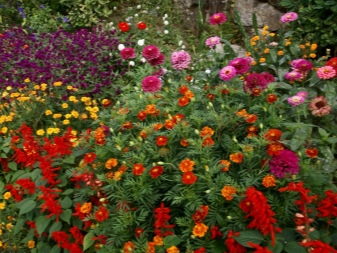
In the design of landscape design, both low-growing and tall varieties of zinnias are used. The latter are usually grown precisely on flower beds or are used to mask unsightly buildings, but undersized ones are planted in decorative pots, serve to decorate garden paths or balconies.
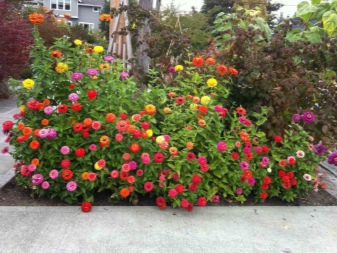
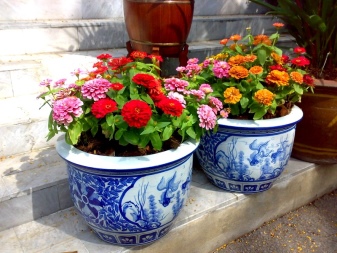
Zinnias growing in a bed with other horticultural crops usually behave very peacefully and do not tend to drown out the growth of other plants. These flowers go well with crops such as marigolds, chamomile, calendula, saffron or asters.
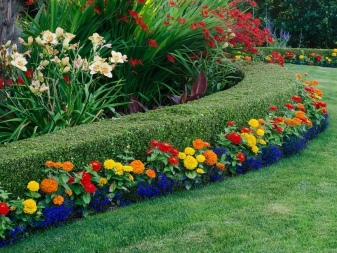
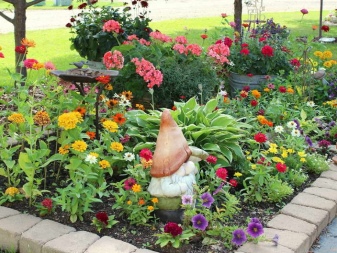
For more information on growing and caring for zinnia, see the next video.
Description of perennial zinnia
Introduced to Europe in the 18th century from the southern regions of Mexico. The name of the culture was given by the famous botanist Karl Linnaeus in honor of Johann G. Zinna, the director of the botanical garden, in which the scientist collected working herbariums.
 Zinnia is a perennial herbaceous bush plant
Zinnia is a perennial herbaceous bush plant
Zinnia is highly resistant to drought and heat.Unpretentious care allows you to grow a crop in many regions with mild and warm winters. In middle latitudes, annual varieties are common, since the Mexican culture does not tolerate even small frosts and dies. Among summer residents, he is often referred to as a "major".
Botanists describe zinnias as follows:
- Perennial herbaceous shrub plant of the Astrovye family.
- Tall species, the height of shoots in different varieties varies from 20 cm to 1 m, there are also higher specimens.
- The foliage is ovoid, slightly pointed at the end, covered with a hard nap, the villi are directed opposite or whorled.
- Inflorescences form isolated baskets up to 2–4 cm across, forming at the very top of the shoot.
- The flowers are ligulate, growing in several tiers. The color varies from variety to varieties, there are white, orange and red tones. The flowering period begins in July and lasts until the autumn cold.
- Fruiting with a tuft of achene.
Zynias practically do not smell, therefore they are not dangerous for people suffering from allergic reactions.
 The flower is actively used in floristry
The flower is actively used in floristry
Description of the best varieties
Consider the most popular and best zinnias.
"Lilliputian"
Zinnia "Lilliput" has quite large flowers. So, their diameter is about 10 cm. Moreover, the flowers themselves have a dome-shaped shape and a double texture. Variety "Lilliput" in height can reach 0.5 meters
The plant belongs to the thermophilic category, therefore, it is very important to ensure the optimal temperature during the care process. The flowering process begins 3 months after the first shoots have appeared
It lasts a long time and is very intense.
Due to the fact that "Lilliput" has flowers of bright colors, it is often used in landscape design. For example, a plant will look great in a flower bed.
"Dreamland"
This botany variety belongs to the category of low-growing and compact plants, due to the fact that the height of the zinnia "Dreamland" grows only up to 0.25 m. At the same time, the variety is distinguished by a rather intense flowering. Variety "Dreamland" belongs to the dahlia-flowered subspecies. It is quite resistant to various kinds of diseases and pests. It is also worth noting the fact that "Dreamland" can be grown not only in the open field, but also in pots at home.
Magellan
This variety of zinnias belongs to the graceful species and is distinguished by its unpretentiousness in terms of care. It should be noted right away that the Magellan variety was bred exclusively for decorative purposes. In this regard, the plant is often grown not only outdoors, but also in flower beds, pots and containers. Among the representatives of the "Magellan" variety, you can find specimens of various shades. Moreover, the flowers have a double texture, and the plants themselves are insignificant in size.
"Persian rug"
The Persian carpet variety, which got its name from its color, amazes both experienced gardeners and beginners. This effect is created due to the unique color of the flower, which combines several shades at once: yellow, brown and red tones. At the same time, heterogeneous blotches can often be found on the petals of flowers. By themselves, zinnia flowers of the "Persian carpet" variety can reach 5 centimeters in diameter. Due to such an unusual appearance, zinnias belonging to this variety can become a real decoration of your garden. They will make an indelible impression on both your household and neighbors, as well as bystanders.
"Profusion"
This flower variety belongs to the category of annuals. Zinnia of the "Profusion" variety is a low-growing plant with a homogeneous structure. It can be grown both in flower beds and in pots or containers. The plant has a fairly strong and well-developed root system.It is quite simple to grow it, so very often beginners in gardening give preference to this particular variety of zinnias. The flower tolerates a variety of climatic conditions, so it can be grown in all regions of our country.
"Double Zakhara"
Representatives of this variety, contrary to popular belief, are not perennial plants. On the contrary, they are annuals. Among this variety, you can find a real mix of colors. In height, the bushes of the variety can reach 50 cm, and the width does not exceed 40 cm.The diameter of the flowers is quite large and is 6 cm.
Benari Giants
As you might guess from the name of the variety, its peculiarity is flowers that are quite large in diameter, which can be painted in a variety of colors.
"California giants"
Just like the previous variety, "California Giants" are plants that are distinguished by their large flower sizes (up to 14 cm).
"Topolino"
The flowers of this variety are distinguished by their double texture. The height of the bushes usually does not exceed 0.6 meters, but at the same time they are distinguished by a pronounced strength.
Correct design
Flower beds with continuous flowering are formed from perennials, annuals and biennials. Although, in terms of practicality, it is much more profitable to fill the flowerbed with perennial crops, supplementing them every year with fresh annuals with a long flowering period.
When choosing garden crops, they are guided by:
- A type of flower garden.
- Decorative characteristics - height, shape, color of inflorescences and foliage, timing of flowering.
- The environmental requirements of the varieties.
The creation of plant compositions is based on several principles:
Combine crops that have identical or similar requirements for the composition and condition of the soil, light regime, nutrition and watering schedule.
Arrange flowers, taking into account the color scheme and combine plants that have contrasting colors or complementary colors.
Combine plants according to size and development intensity. If cultures are prone to active growth, then measures must be taken to curb their growth.
Popular flower crops for the device of mixed all-season flower beds:
Spring composition. For its creation, preference is given to bulbous crocuses, daffodils, iridodictiums, muscari, chionodox, forest trees. From perennials - erantis, liverworms, marigolds, crested beetles, anemones, brunners, and among biennial crops - viols, daisies, pansies.
It is possible to plant some perennial plants in a flowerbed of continuous flowering, which are valued by flower growers for their decorativeness and unpretentiousness in care. To make a flower bed of perennials, you need to pick up 6-8 varieties of perennial crops with different bud opening times.
Taking into account that the average duration of flowering of perennials is a month, the flower bed will constantly delight with the splendor of the flowering of one species and one or two still blossoming varieties.
In the first half of May, you can enjoy the splendor of the mauve buds of the berry, a little later, the multi-colored primroses, and starting from the second half, the brightness of the colors of the iris with white, purple, blue, yellow and aquilegia. In June-July, cornflower, delphinium, daylily bloom.
From August, astilbe will begin to solo, easily recognizable by the panicles of inflorescences glowing with all shades of red palette, then various varieties of monard and phlox with a bewitching aroma. The end of the season will be marked by the blooming of goldenrods with a bright yellow color and asters.
Knowing that making a choice in favor of thermophilic annuals, one can only count on a three-month blooming and fragrant fairy tale
Since most annual plants are native to the subtropics or tropics, it is important to take care of the seedlings in advance.At the end of winter, they plant petunias, at the beginning of spring they sow seeds of viols, asters, chrysanthemums, dahlias, levkoy, cornflowers, alissum, lobelia, snapdragons, and in the middle of spring they are engaged in marigolds, nasturtium, cosmea
Thus, it becomes possible for the uninterrupted supply of the flower garden with a variety of flowering crops, regardless of their seasonality. For example, the flowering of viols and petunias sown for seedlings in winter can occur both in May and September. Although there are certainly many seasonal plants among annuals.
The standard design scheme for a round flower bed of low-growing flowering annuals:
- In the first weeks of April, the central part of the flower garden is filled with ageratum seedlings: this is how the flower arrangement will turn out with a lush middle.
- White-flowered or red flax, sown for seedlings in April, is used to frame ageratums.
- Flax is surrounded by seedlings of multi-colored dwarf asters, sown in May. They will delight you with flowering until October.
- Decorating the curb with two types of shaving: with lush and small flowers is the most advantageous solution for edging a round flower bed.
Photo of annual flowers
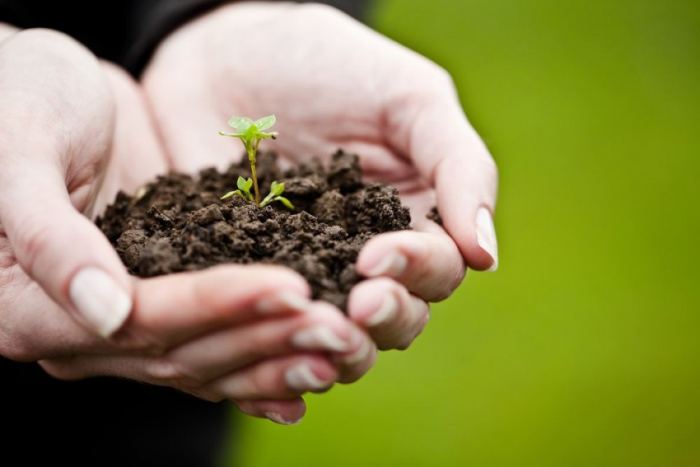


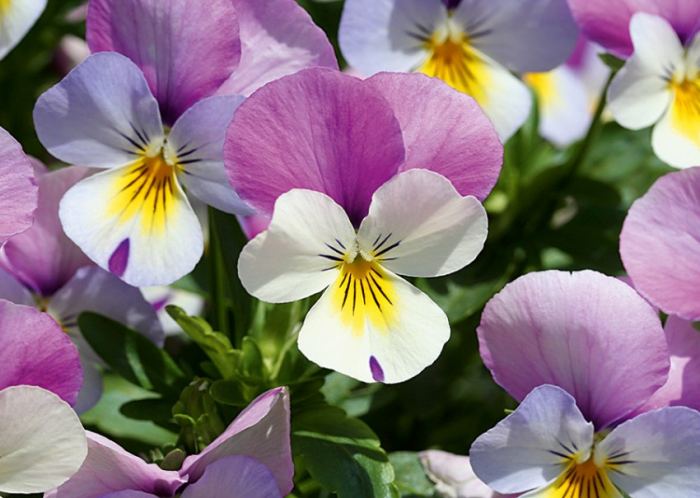
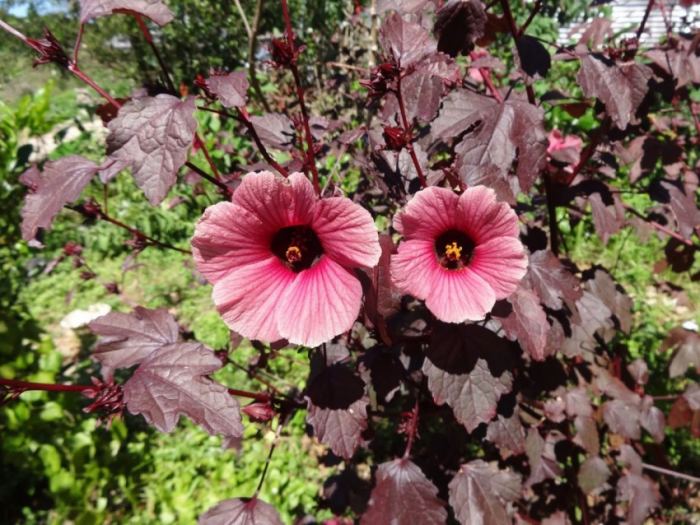
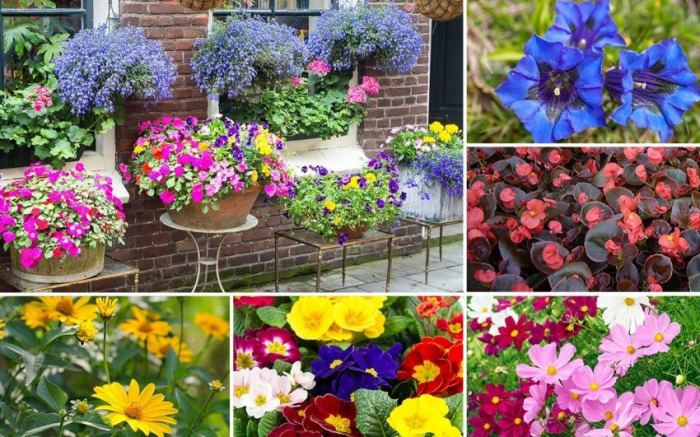
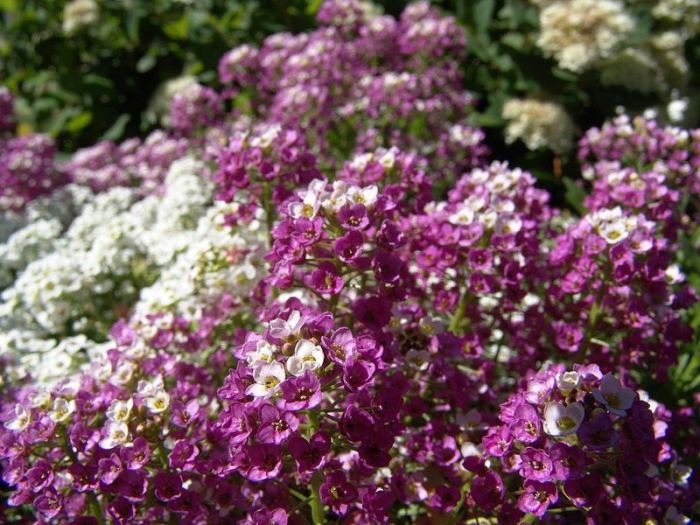
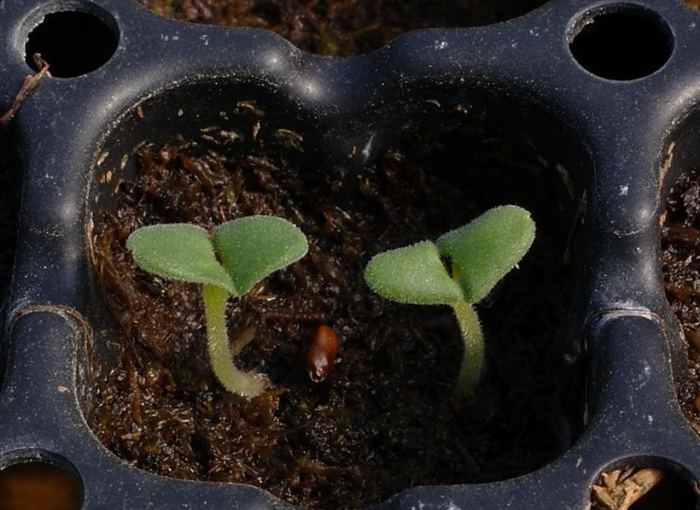
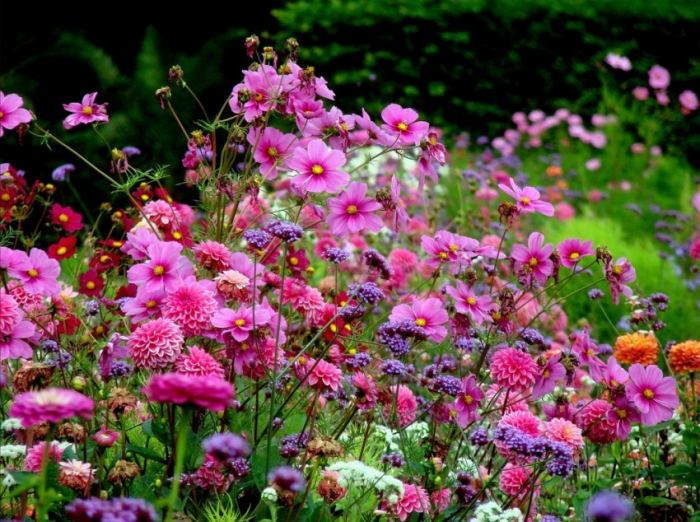
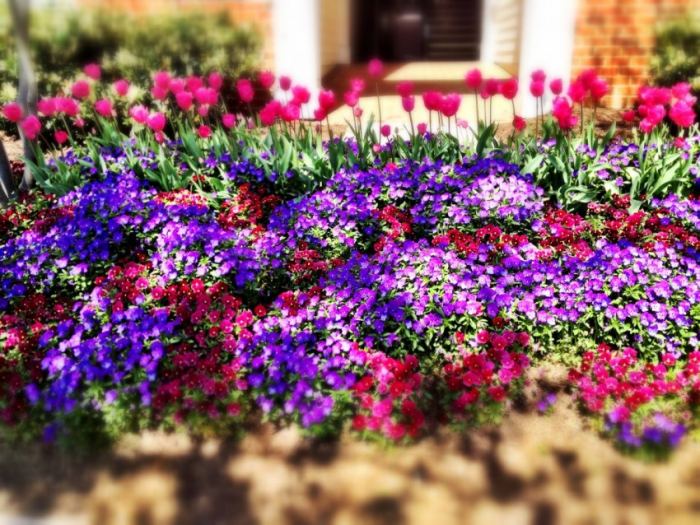
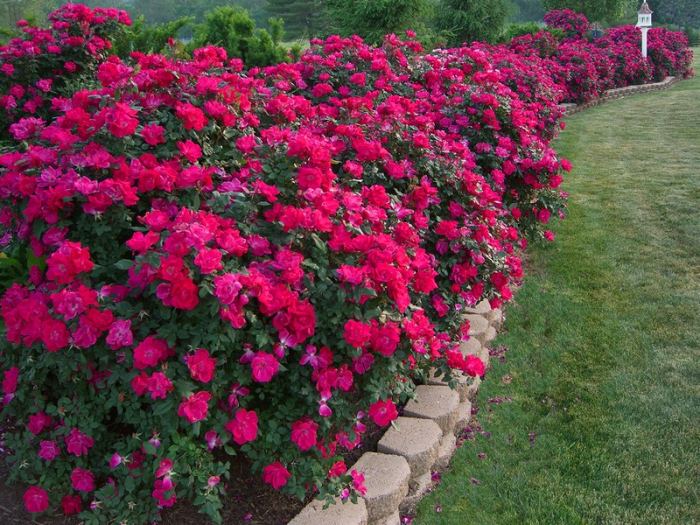
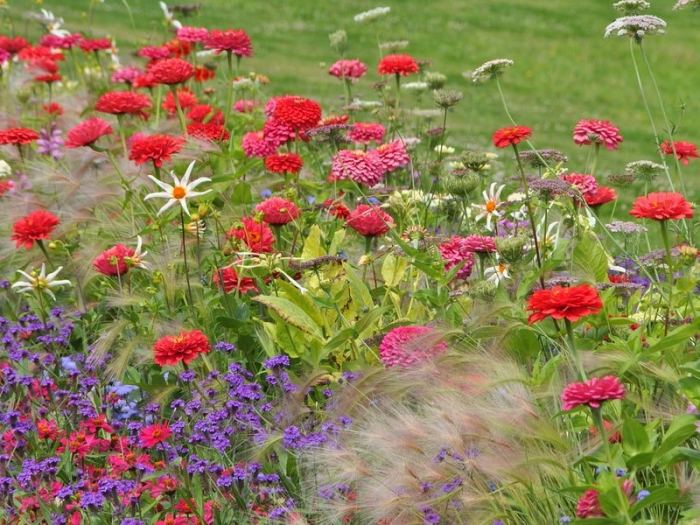
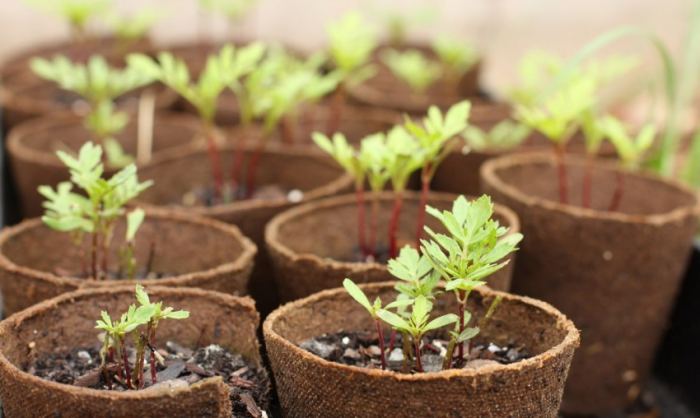
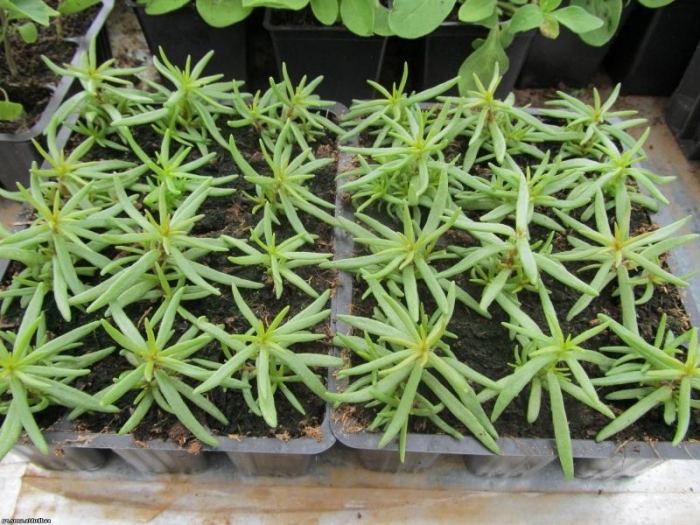

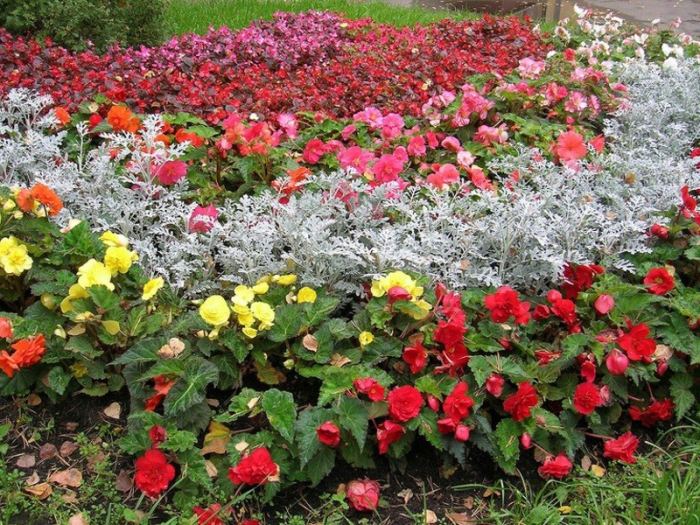
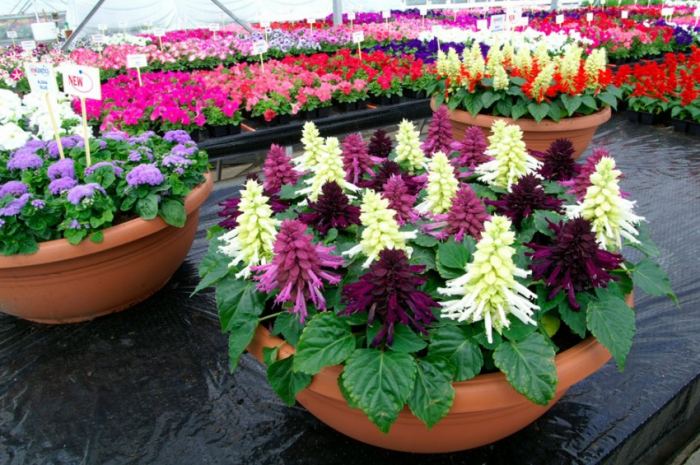



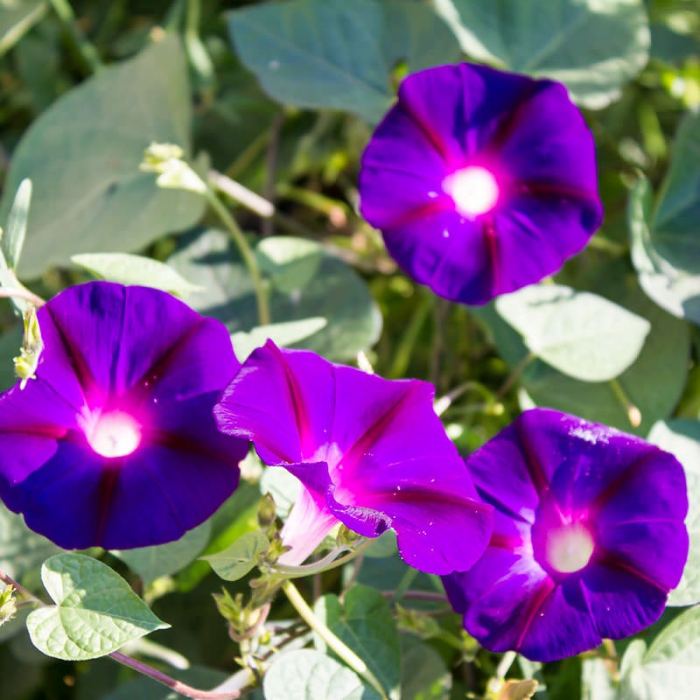
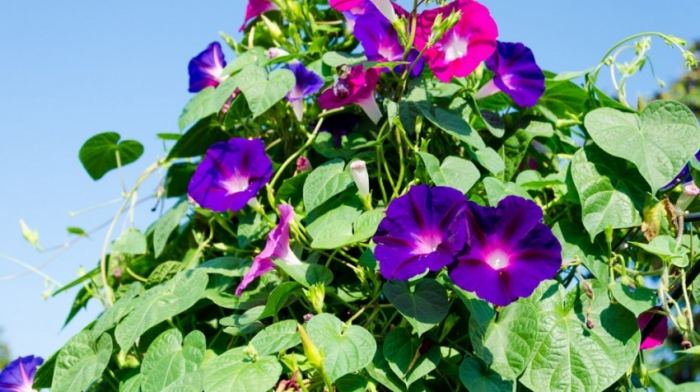
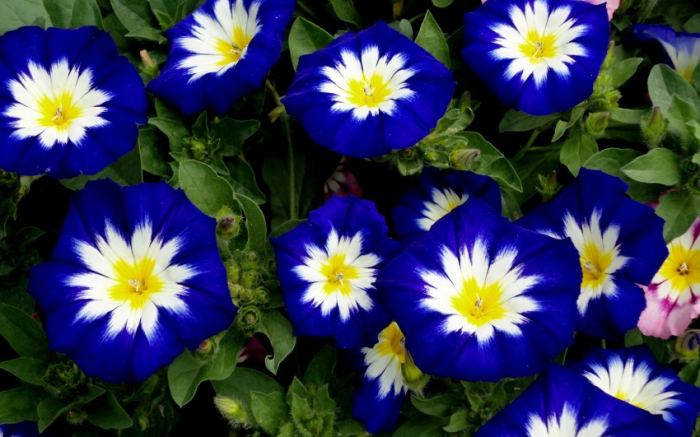
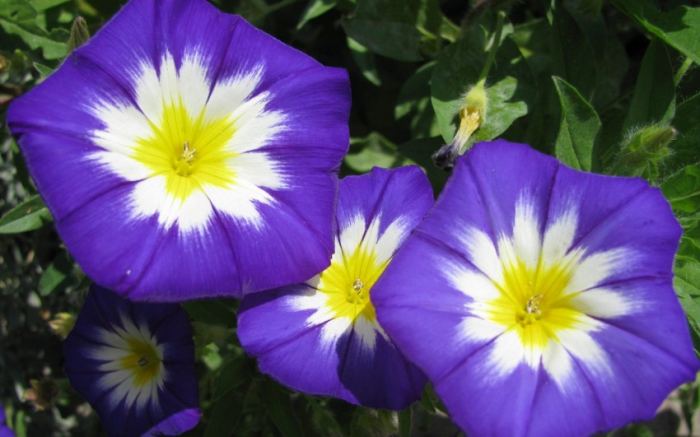
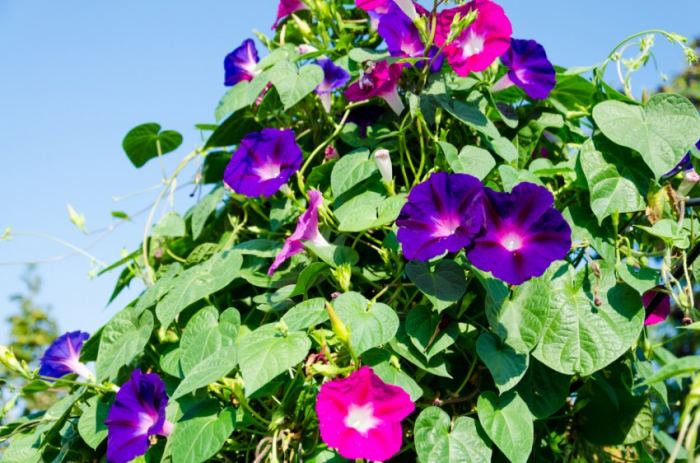


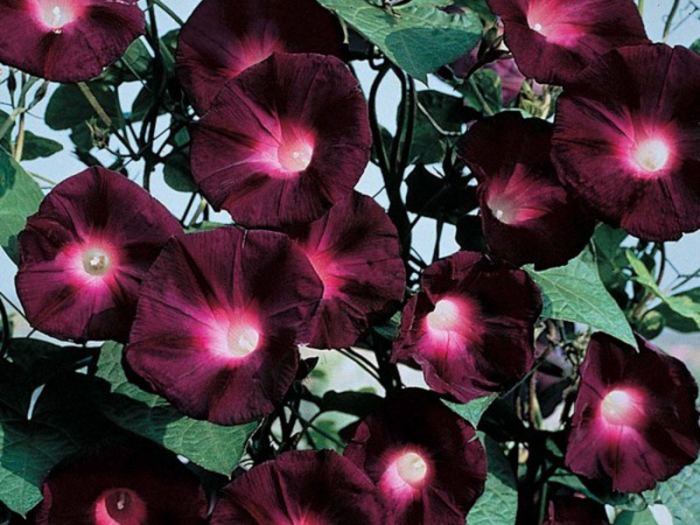
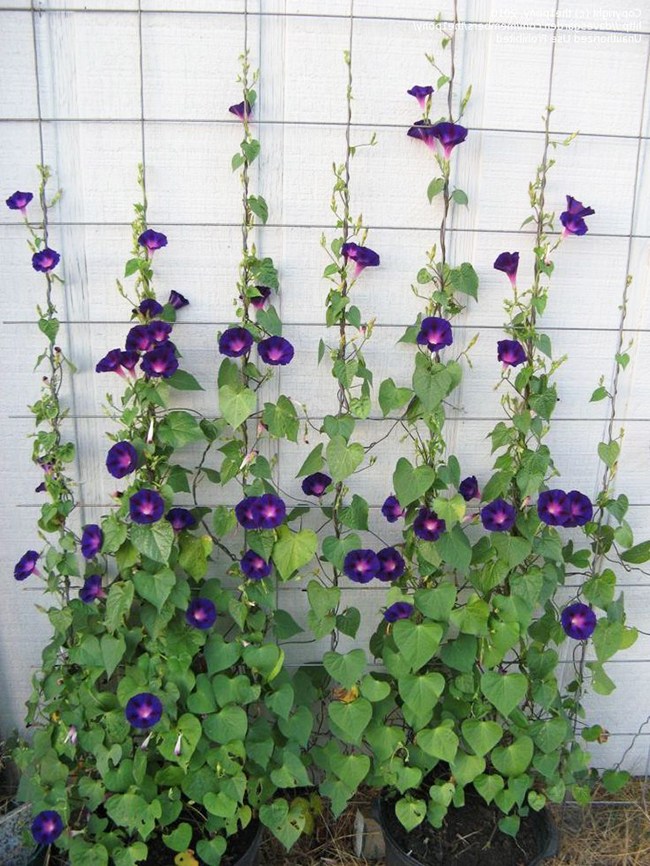
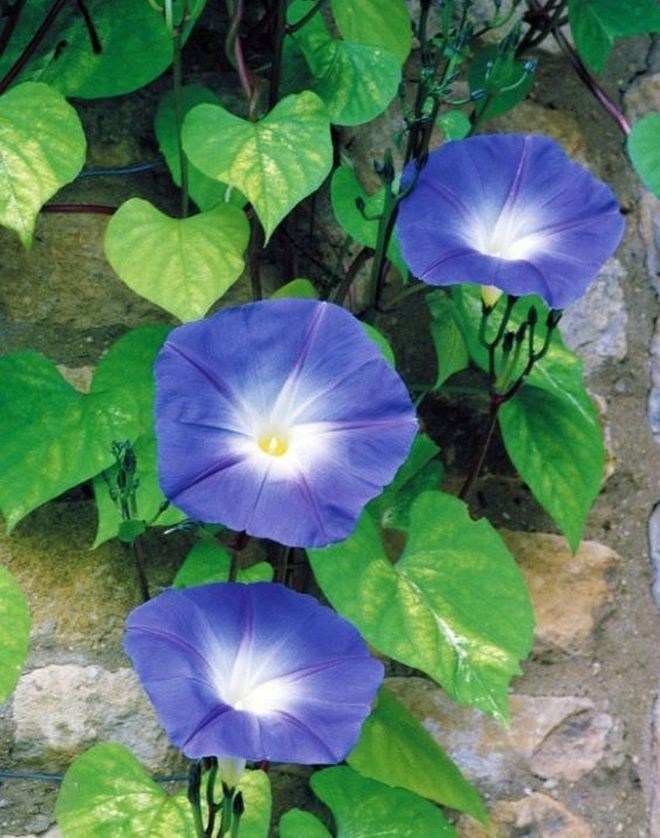



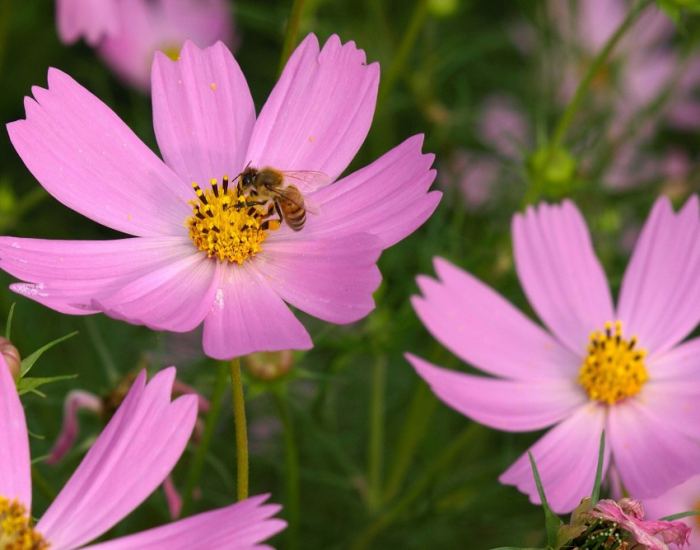
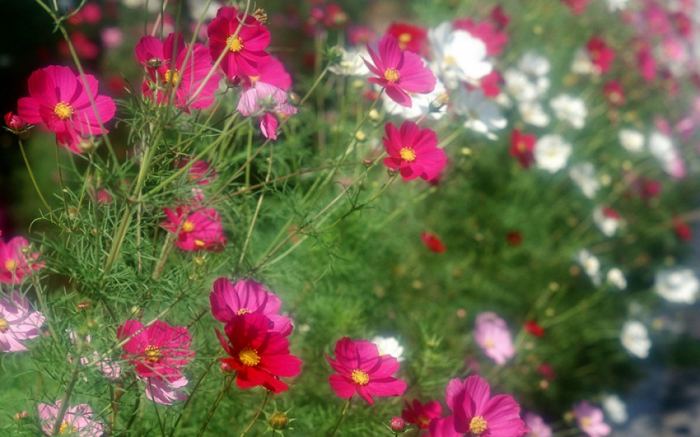
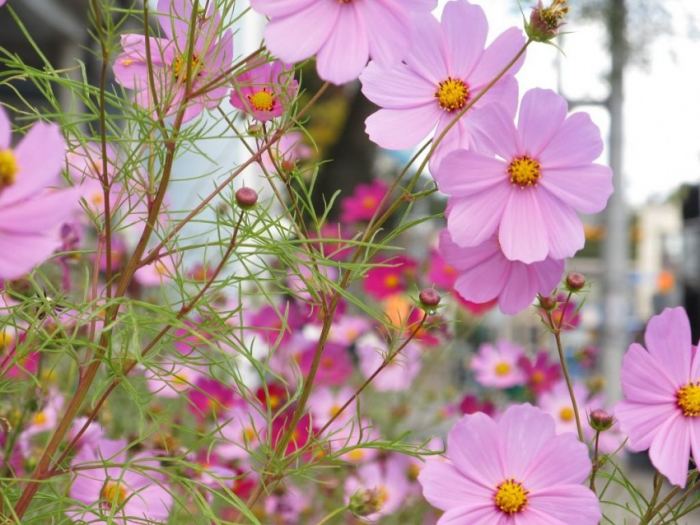
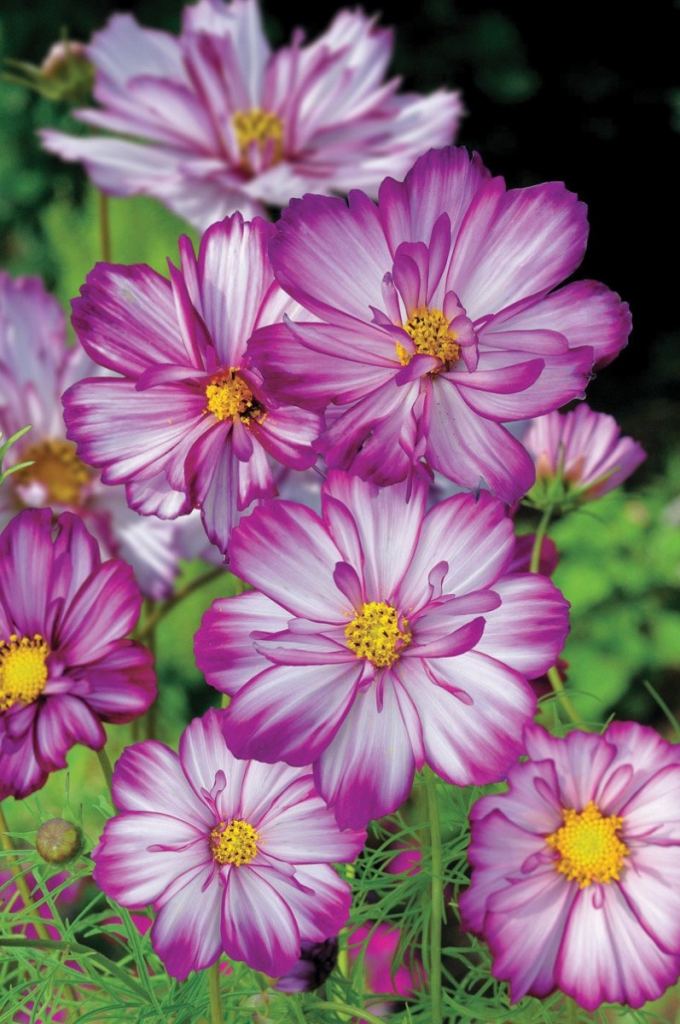


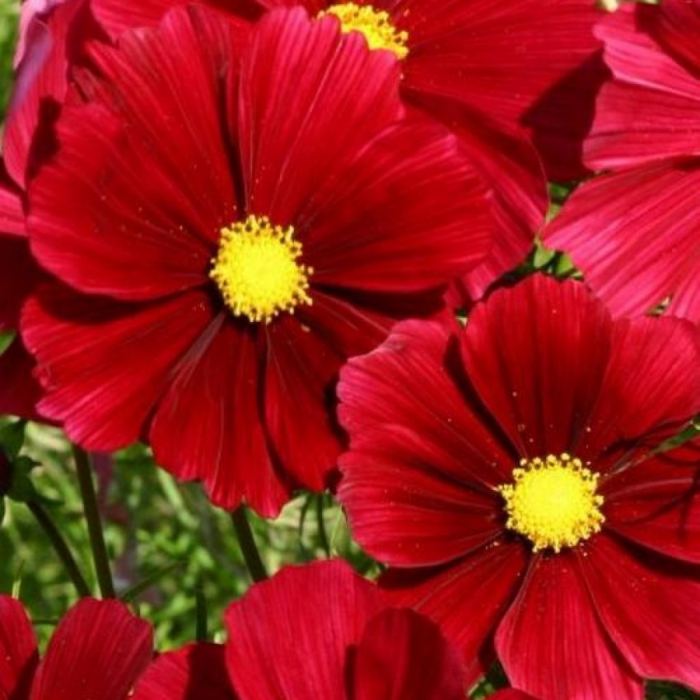
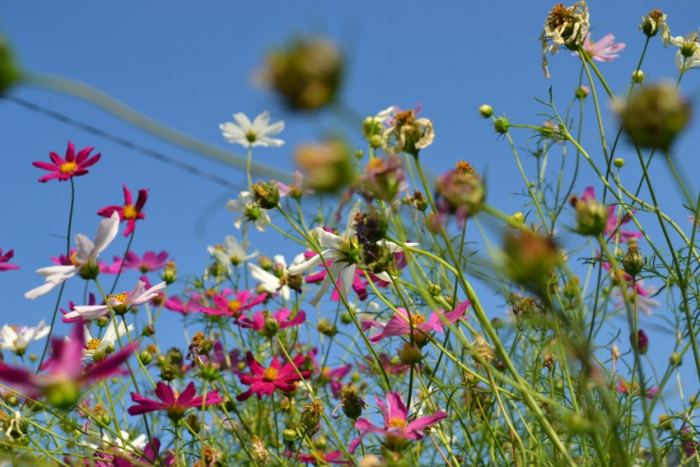
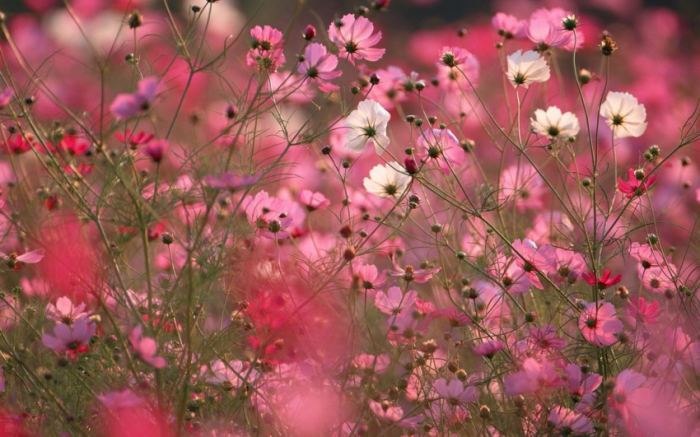

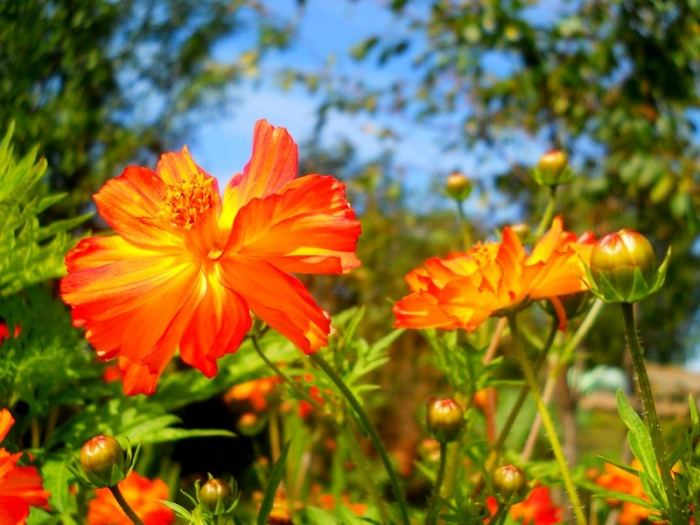
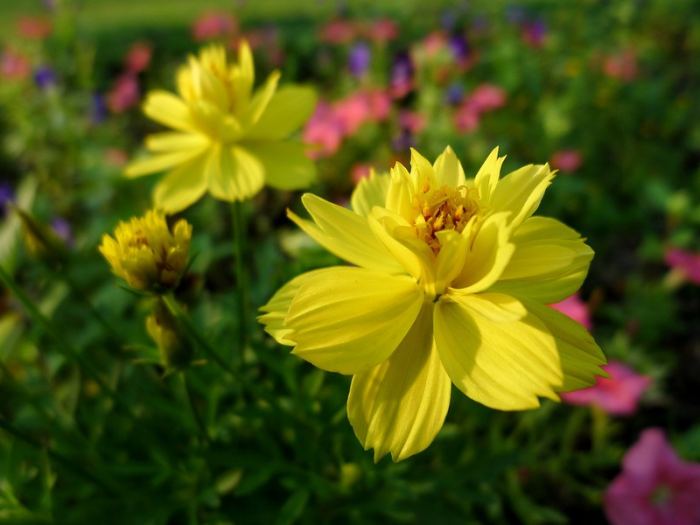
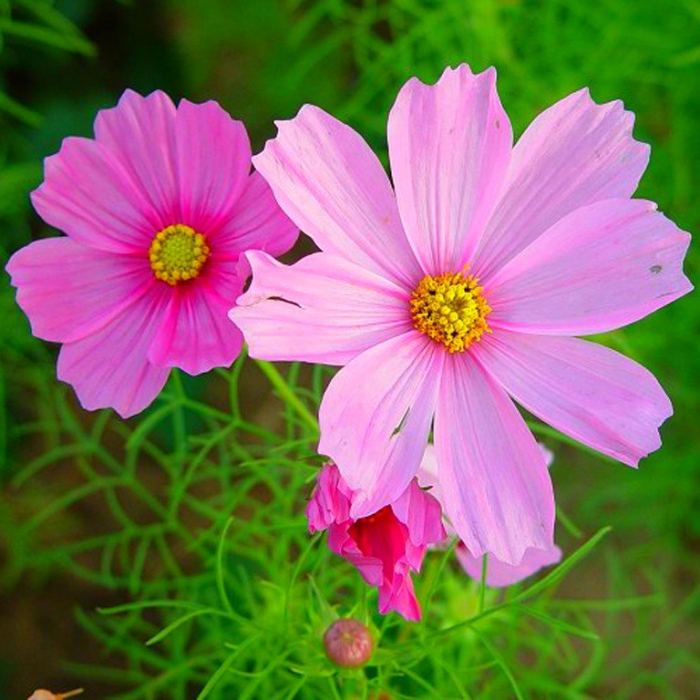

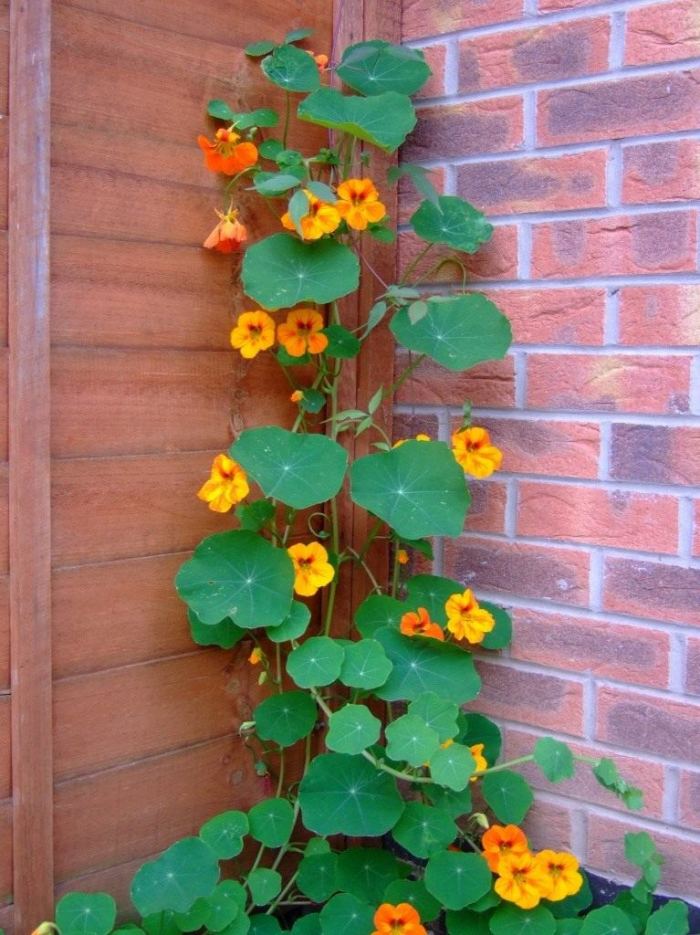
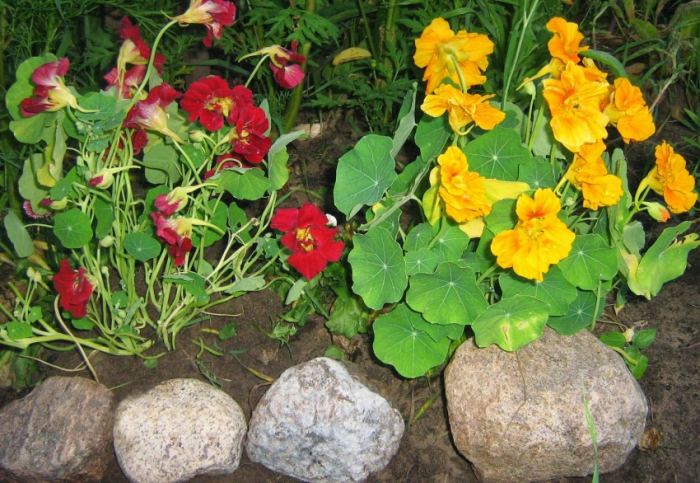
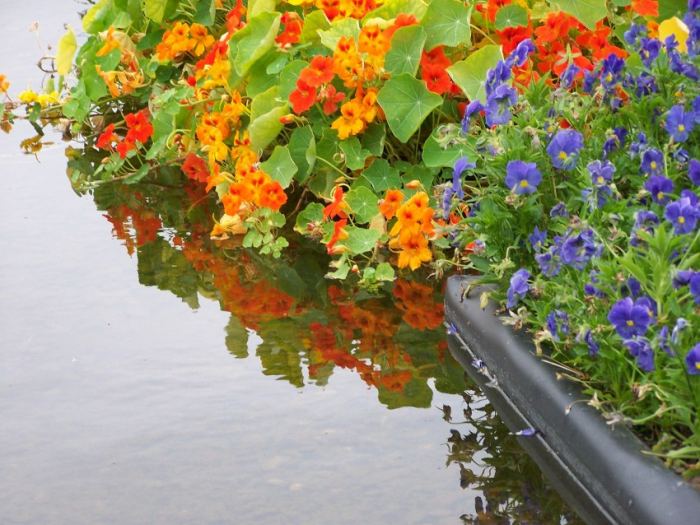
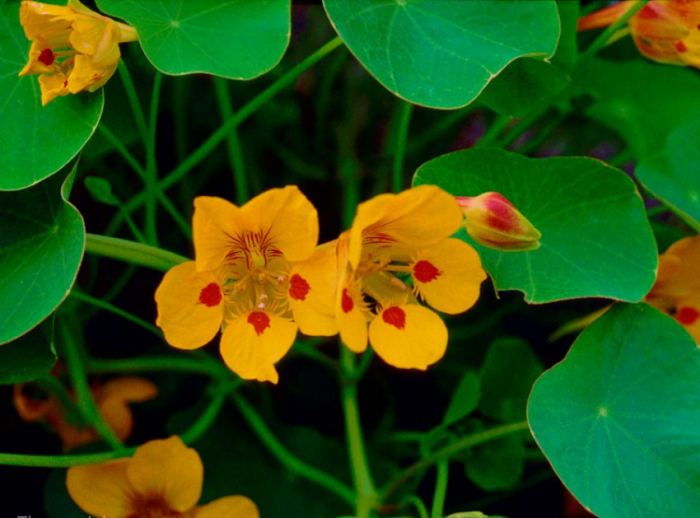

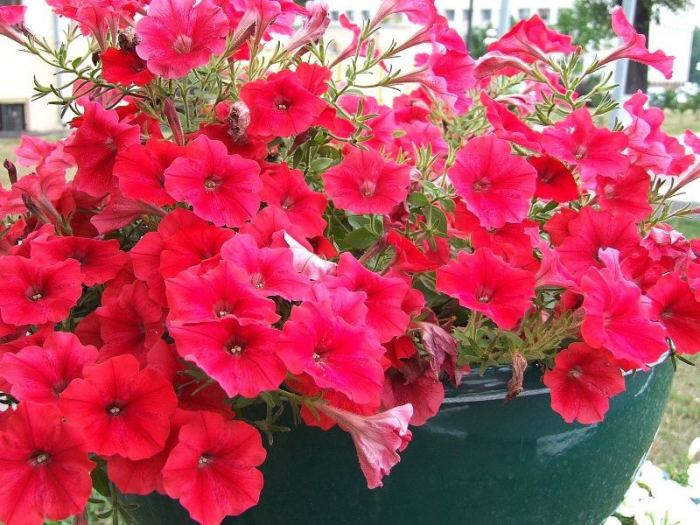
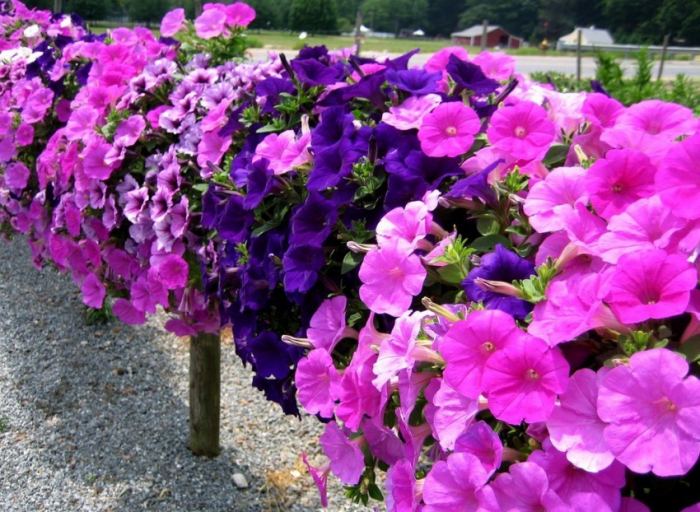
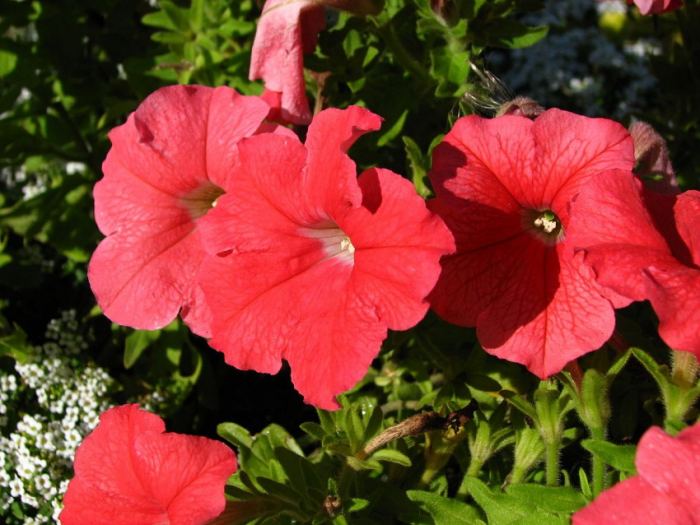
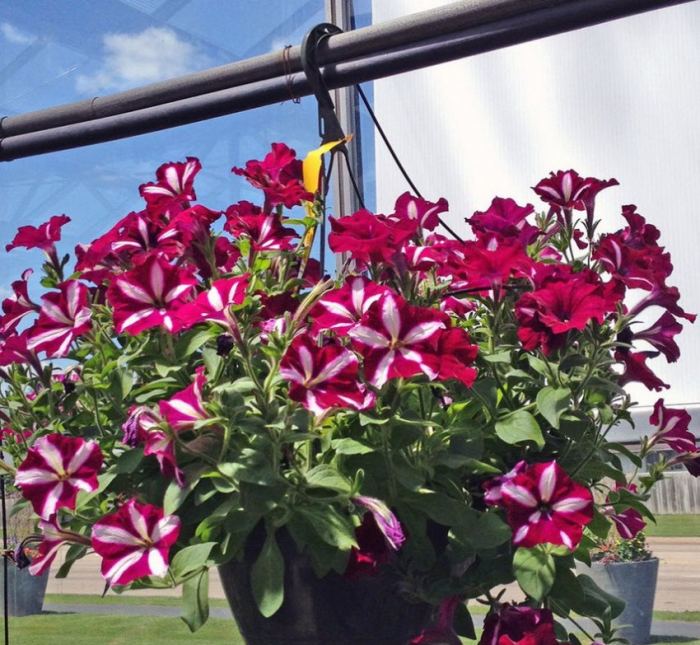
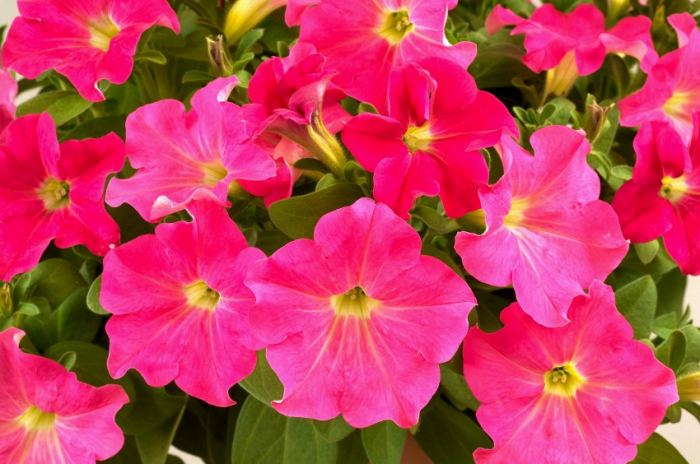
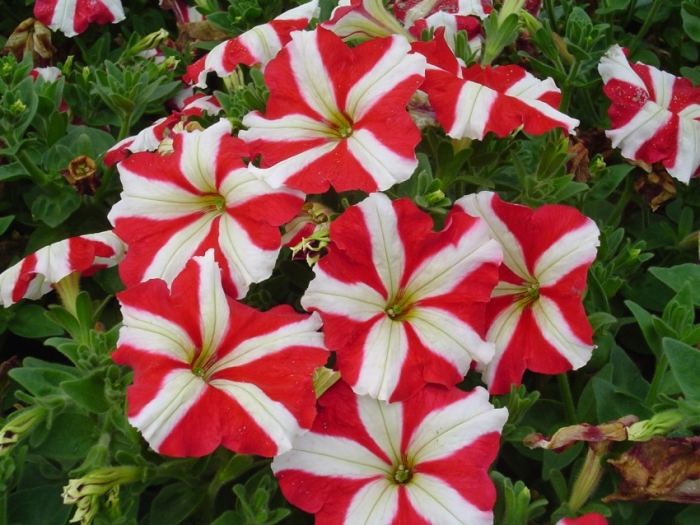
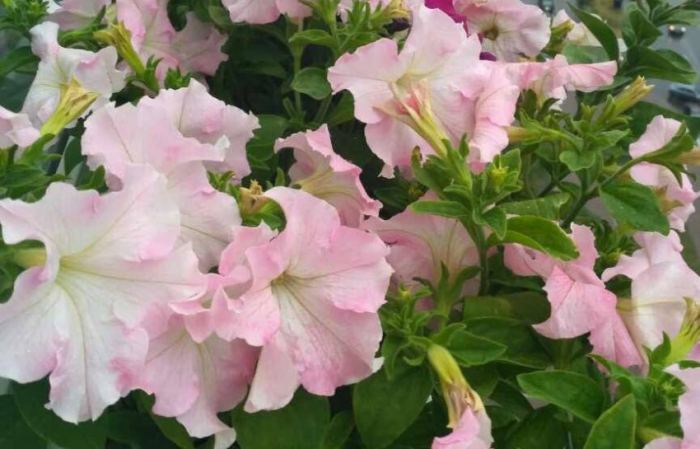
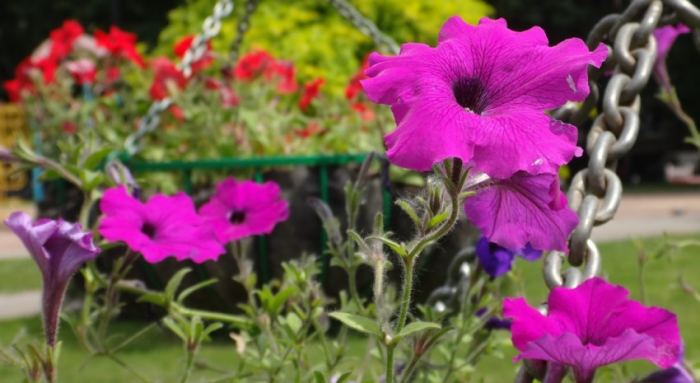

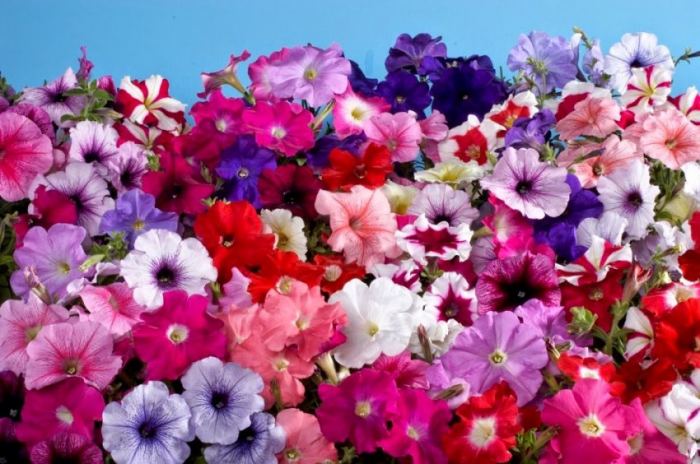
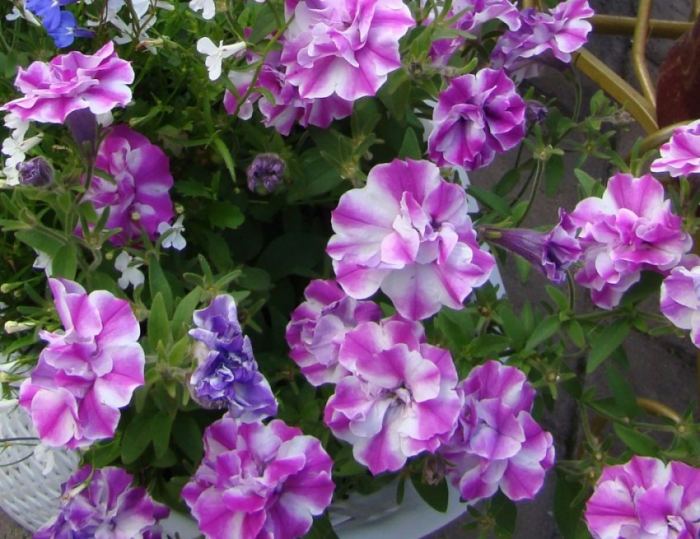
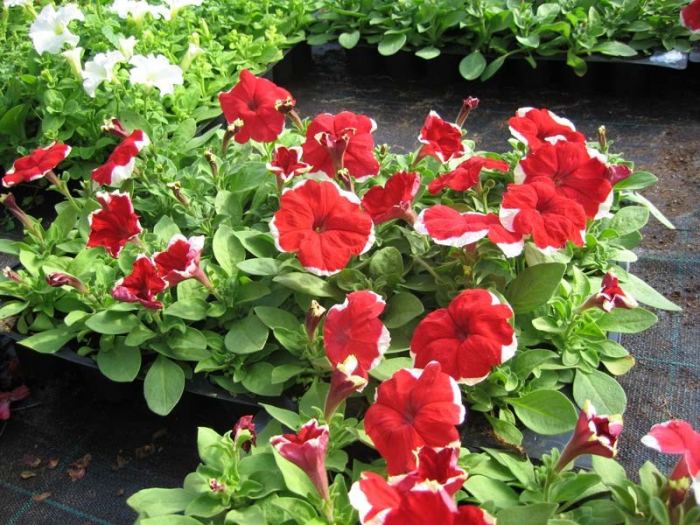
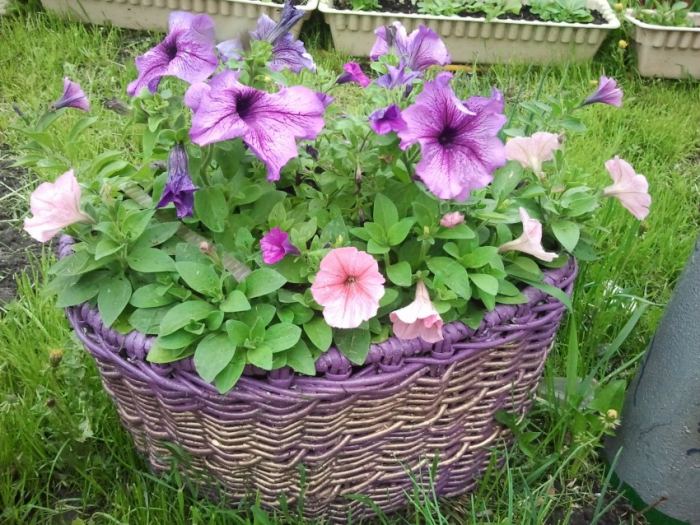





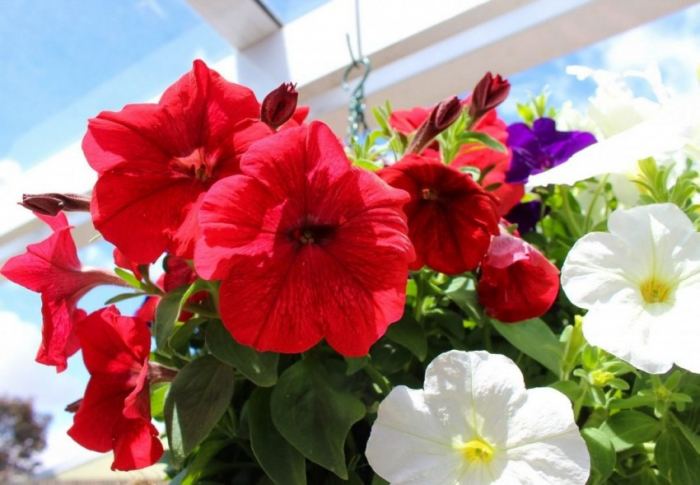
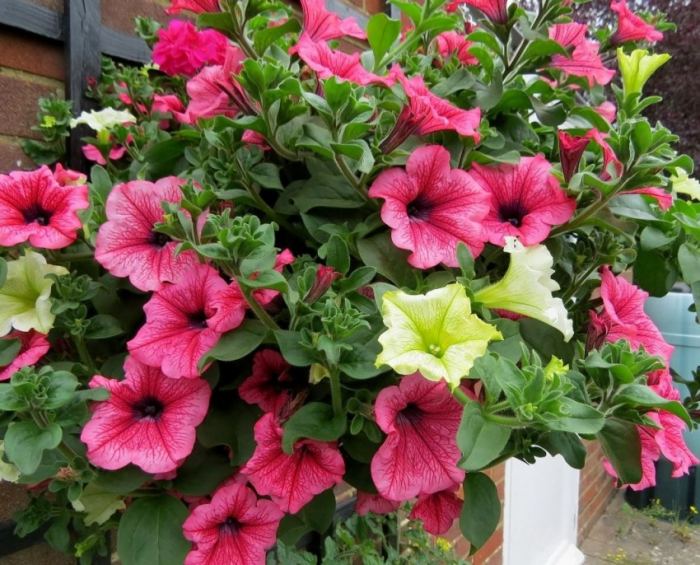
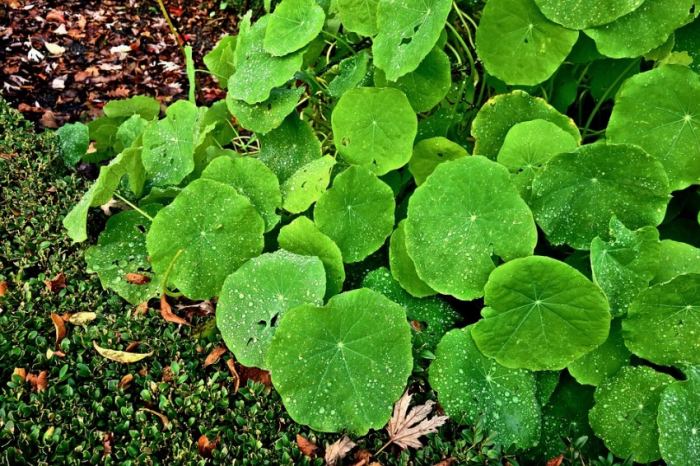
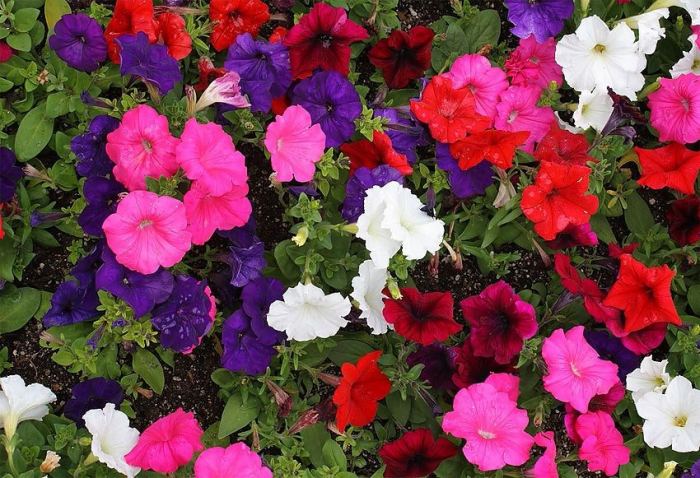
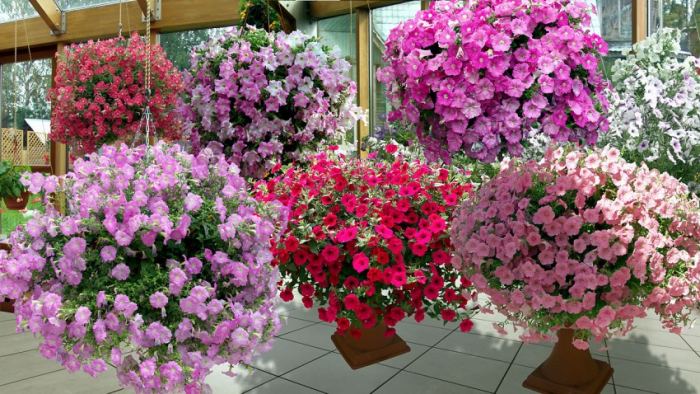



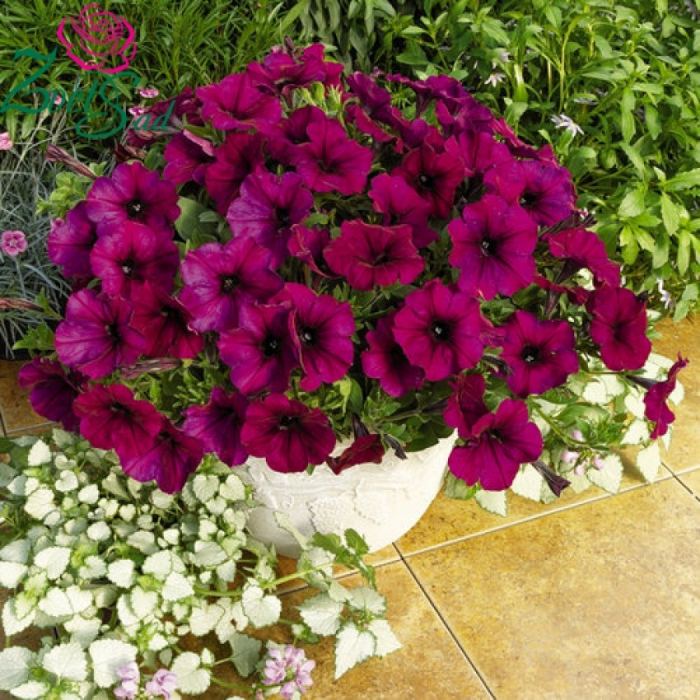
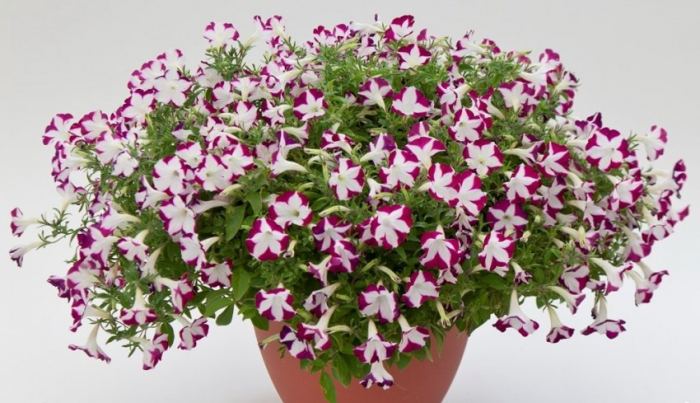
We also recommend viewing:
- Lianas for the garden
- Flowers for flower beds blooming all summer
- Artificial turf for a summer residence with your own hands
- Bush trimming
- Stunted flowers
- Juniper planting
- Front garden
- Shrubs for giving
- Vertical gardening
- Do-it-yourself tapestry
- Whitewashing trees
- The better to fertilize the land
- DIY flower beds
- The best flowers to give
- Living fence in the country
- Saplings of flowers
- Diy vertical flower bed
- Do-it-yourself rosary in the country
- Instructions on how to drain the area
- Lawn care
- Rockery do it yourself
- DIY alpine slide
- Unpretentious flowers for the garden
- Perennial flowers
- Instructions on how to arrange a flower bed
- Lawn grass
- DIY multi-tiered flower bed
- Fast growing climbing plants
- Decorative moss for the garden
- How to handle prolific trees
- Do-it-yourself gardening of the site
- Mixborder at their summer cottage
- How to make a lawn in the country with your own hands
- DIY topiary in the garden
- Ornamental grass
- Perennial flower bed scheme
- DIY flower beds
- DIY garden arch
- Conifers for the garden
- Grape seedlings
- Weed control
- A flower bed of stones with your own hands
- Hedge on the site
- Roll lawn
- Rabatka
- Landscaping of the yard
- Bonsai tree
- Tree seedlings
- Thuja western
Trees and shrubs with red foliage
Red maple
The brightest representative in this group of trees is the red maple. This tree is native to Southeast Asia. Widely used:
- Acer palmatum - fan-shaped (palm-shaped);
- Acer shirasawanum - Shirasawa maple;
- Acer japonicum - Japanese red maple.
Fan maple
Shirasawa maple
Japanese maple
The red maple tree will brighten up any garden area. It can be planted both individually and in a group. It goes well with, which favorably emphasize the color and delicacy of maple leaves. Ferns are a great addition. Flowers can be planted: tulips, lilies of the valley,.
Landing
Red maple seedlings are most often sold with a closed root system (in pots).
- Landing is done in holes 2 times more earthy coma
- Carefully remove the seedling from the container, straighten the roots
- Fill the hole with earth, place a seedling in it
- We fill the hole with the ground, tamp it, water it
Further care is watering, fertilization.
Starting in August, stop fertilizing in order to stop the growth of shoots and give and ripen for winter.
It is advisable to cover young plants in the early years for the winter. Red maple does not need pruning.
Decorative apple tree
A decorative apple tree will decorate your site:
in the spring during the flowering period with its pale lilac shades of flowers.
In summer, the unusual color of purple leaves.
In the autumn, it will delight you with beautiful fruits.
This is a very unpretentious, winter-hardy and drought-resistant tree, it does not need your constant attention, but at the same time it pleases you with its beauty all season. Planting and care is carried out as usual
Ornamental apple varieties:
- Weeping or riverine
- Nedzvetsky
- Royalty
- Royal Beauty
- Pioneer
Decorative Apple Royalty
Decorative apple tree Weeping
Decorative apple tree of Nedzvetsky
Pissard plum or red-leaved plum
Another representative of trees with red foliage.
In the spring it will delight you with dark pink flowers, in the summer it will decorate with red fruits, and in the fall it will give a special charm to your garden with dark purple foliage.
It is unpretentious, but unfortunately it has a weak winter hardiness. You can propagate vegetatively - by grafting, cuttings. Planting and caring for a normal tree.
Pissard plum varieties
S. Pissard
S. Pissard early
Red beech
Dark red beech leaves will delight you with yellow foliage in autumn. Beech is a warm-loving plant. Prefers sunny or cozy places. Not picky about the soil, but needs regular watering, humidification. It goes well with conifers.
Red oak
Red oak is a great decoration for your site, but do not forget that it requires a lot of space to grow. Not whimsical, can grow in any soils, except calcareous, does not tolerate waterlogging. In the first years after planting, the plant needs shelter.
Barberry
The leader among shrubs with red foliage is s. An unpretentious, ornamental shrub with edible berries, the leaves are used for pickles. Propagated by: dividing the bush, layering, cuttings. It is better to plant it in a sunny area. Not picky about care.
Barberry varieties
Barberry Thunberg (Berberis thunbergii)
Common barberry (Berberis vulgaris)
Ottawa barberry (Berberis x ottawiensis)
Barberry Turnberg
Common barberry
Ottawa barberry
Scumpia
A variety of skumpia with red leaves is the red-leaved skumpia (red). Not a whimsical plant, grows well on rocky soils. Differs in low winter hardiness.
As you can see, not only flowers can serve as a garden decoration. Trees and shrubs with red foliage can provide excellent competition.
In order to make the garden attractive, there are many varieties of garden decor, but live plants themselves can be decorative ornaments. Ornamental plants are distinguished by the brightness and beauty of flowers, unusual fruits and color of foliage. In summer, the main color of the garden is green, against this background flowers always look great. However, trees with leaves of a different color against the background of a green dominant look very impressive.
If everyone is used to yellow autumn leaves, red ones invariably evoke admiration. Trees, whose leaves turn purple in autumn, are much smaller, and the red color in nature is one of the most beautiful and vibrant. When the flowers bloom, the garden becomes empty, and this void can be filled with ornamental trees and shrubs with leaves of unusual colors.
Barberry Admiration - burgundy and purple leaves with edging look no less impressive than bright autumn flowers, especially expressive in single compositions

